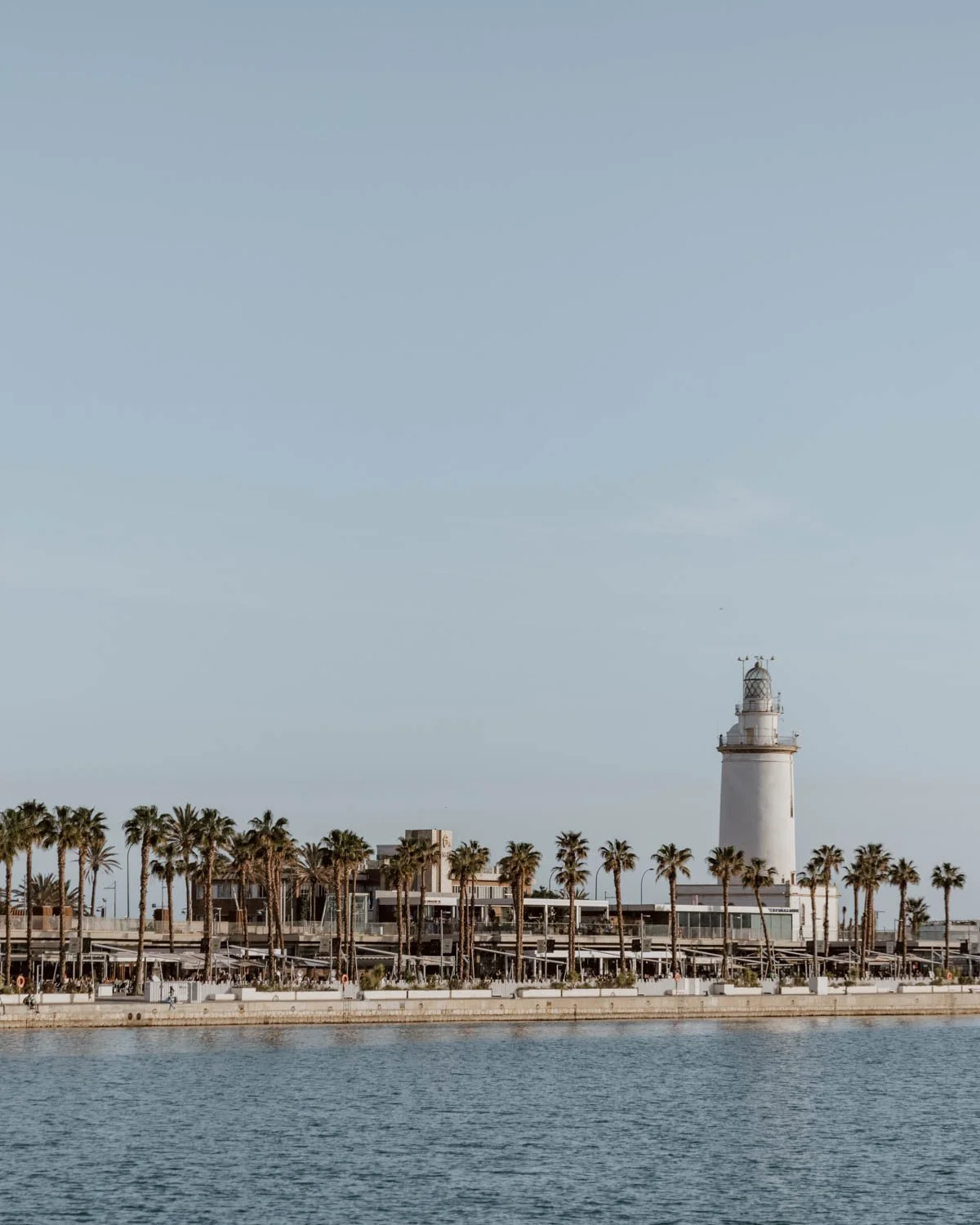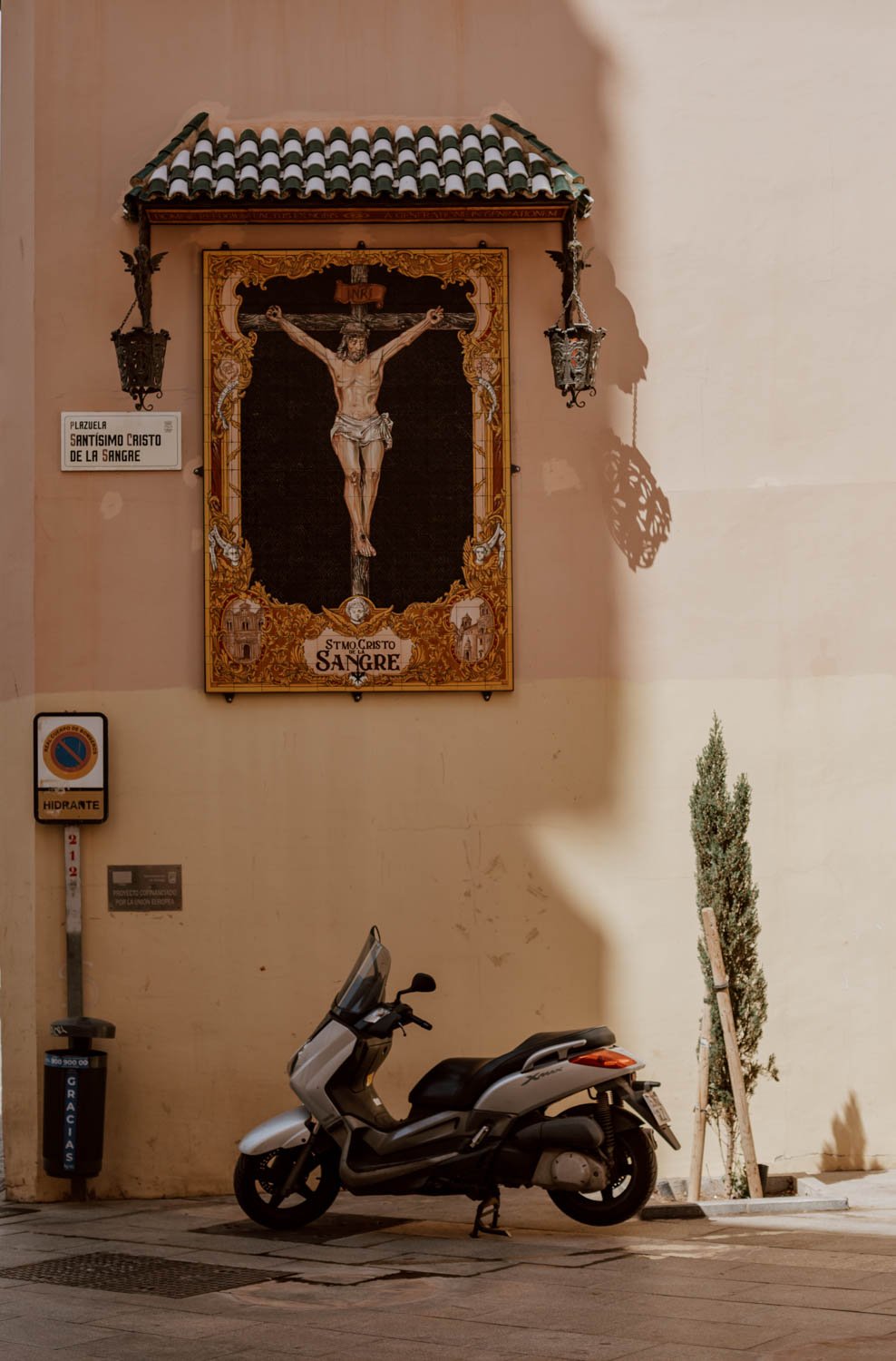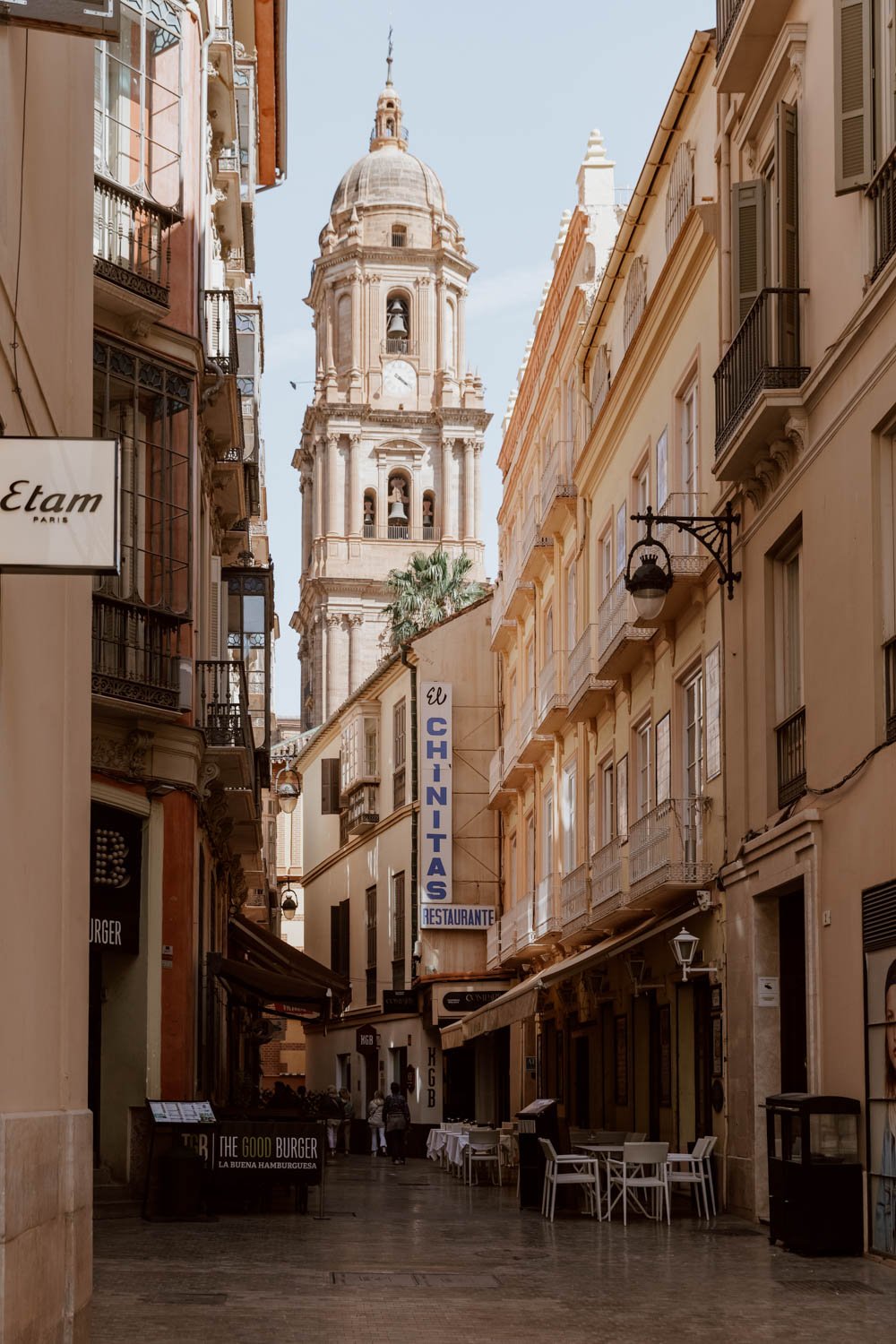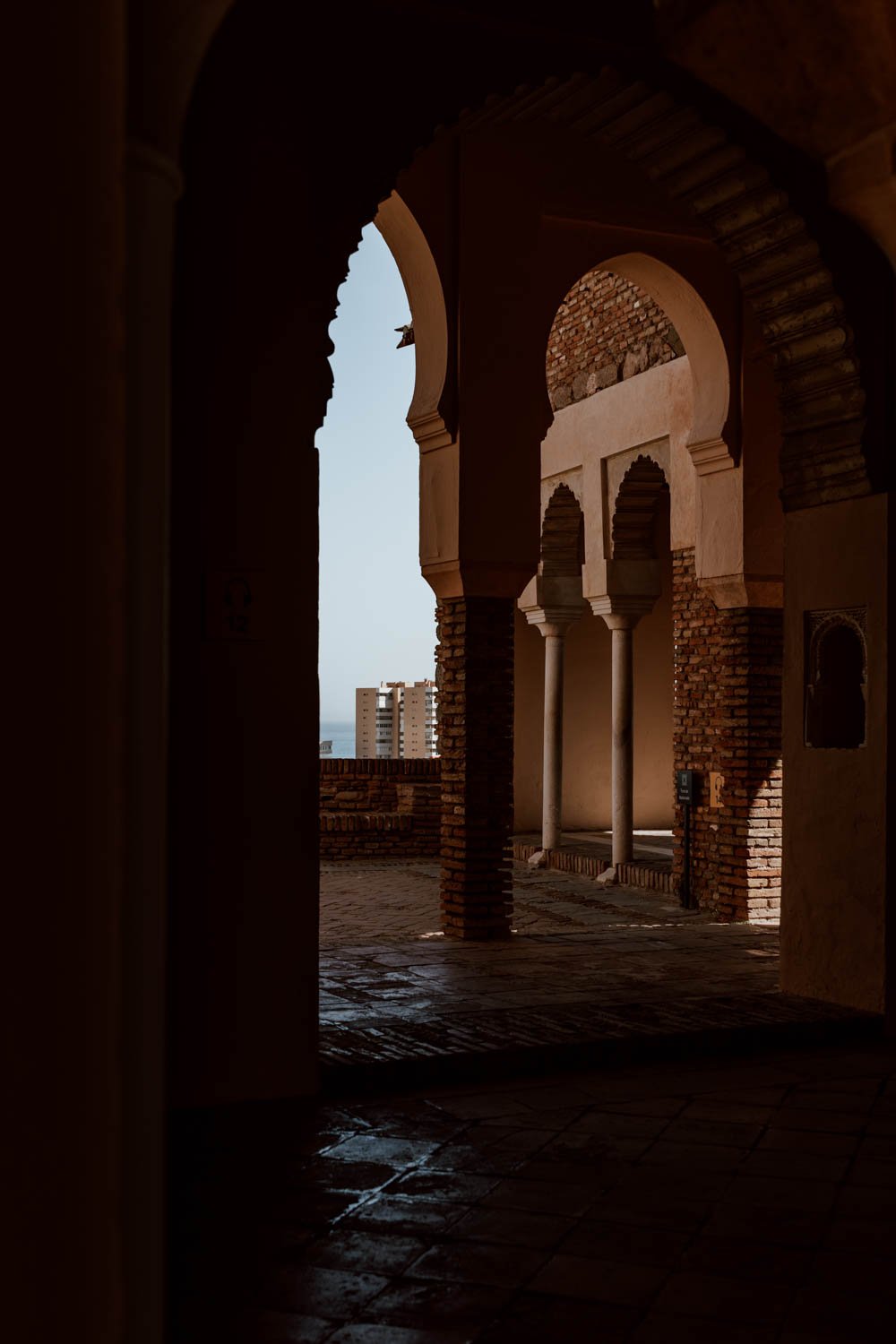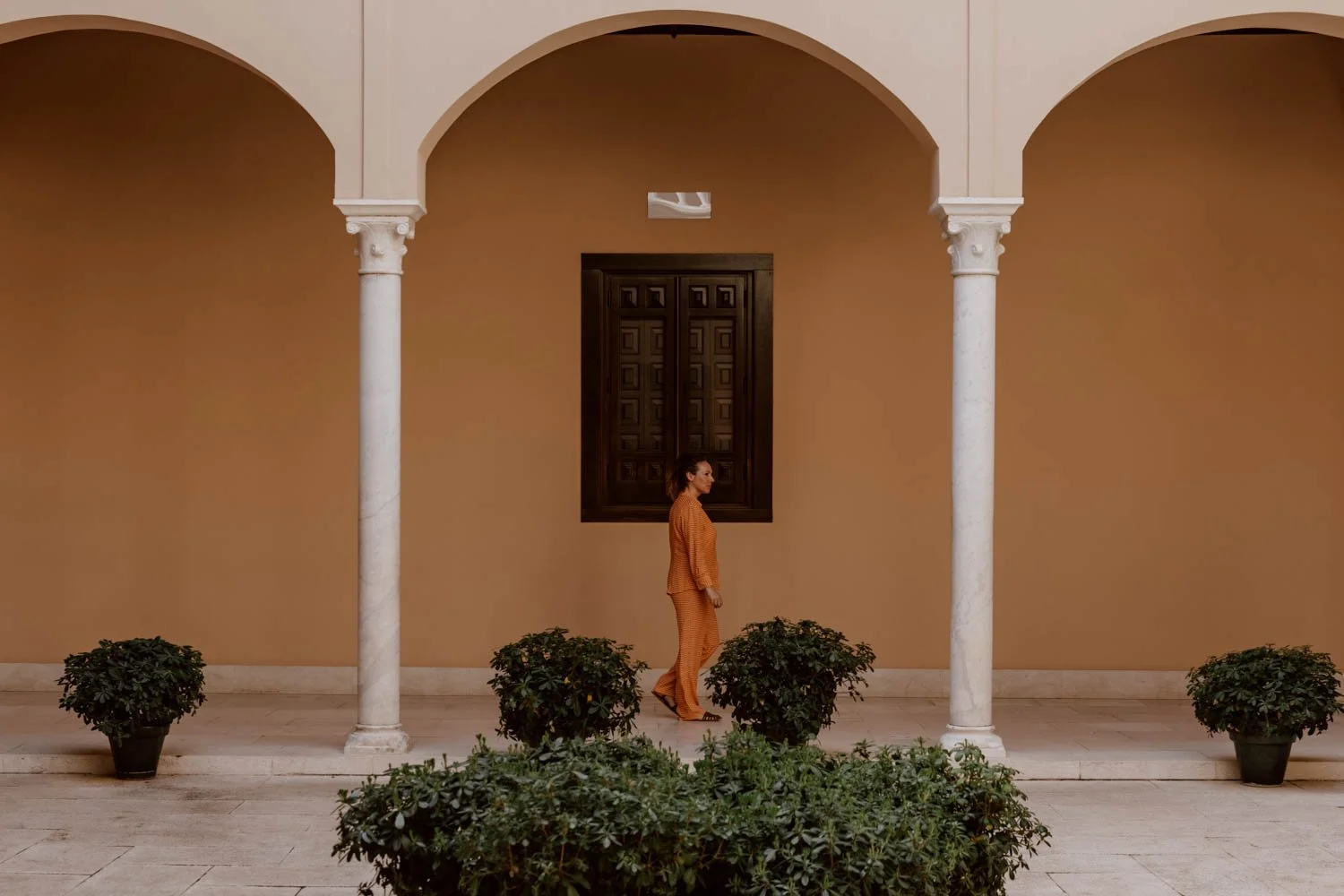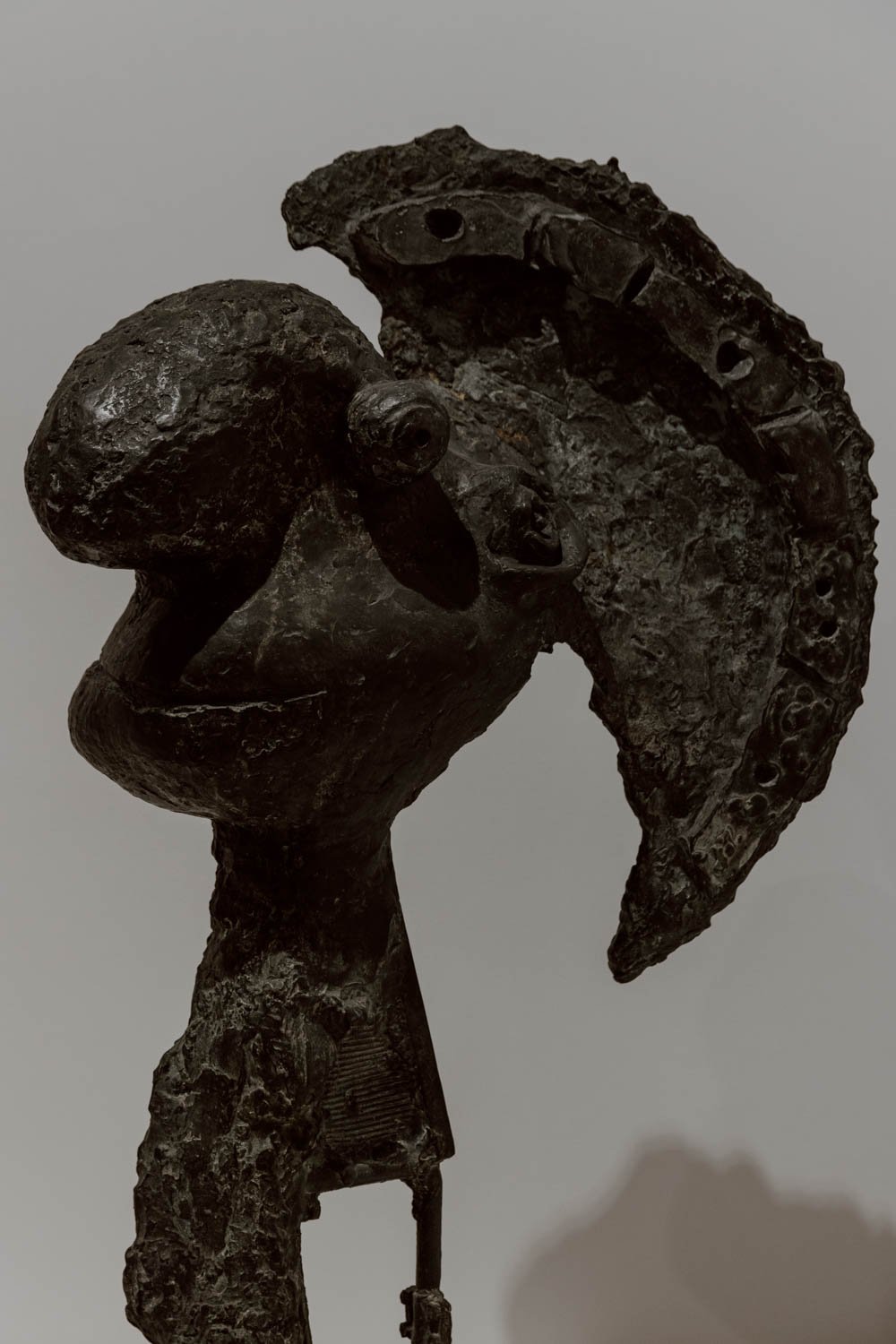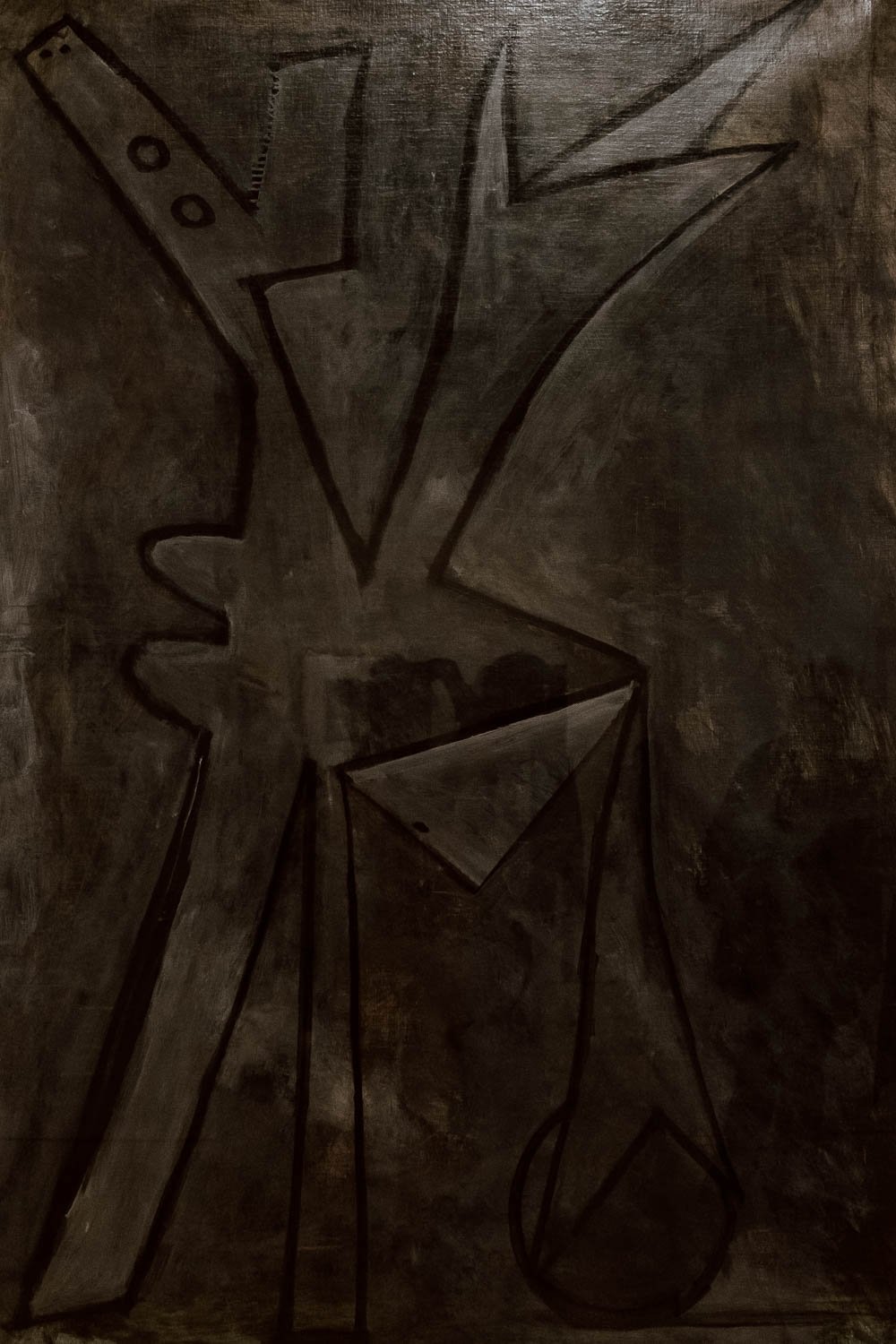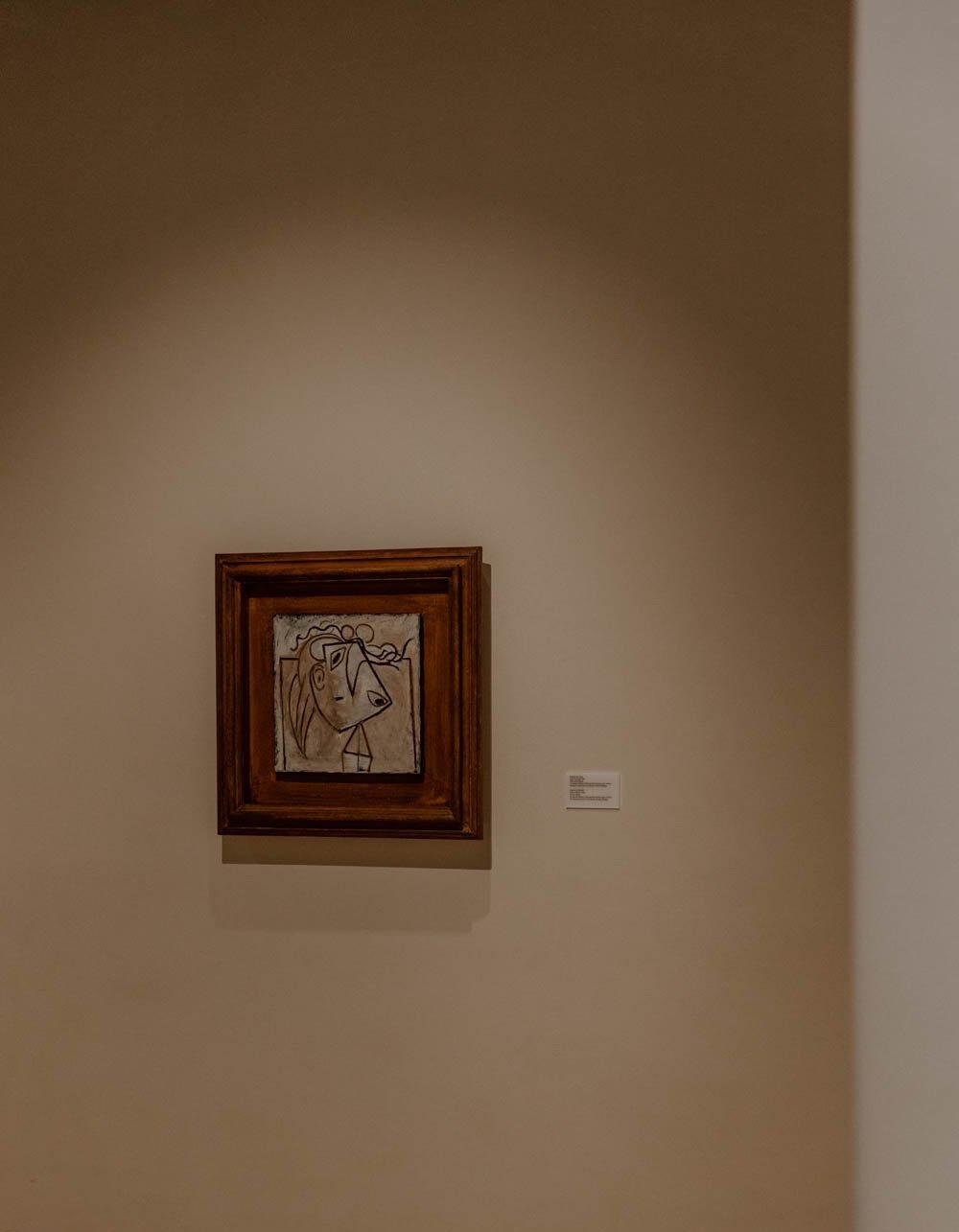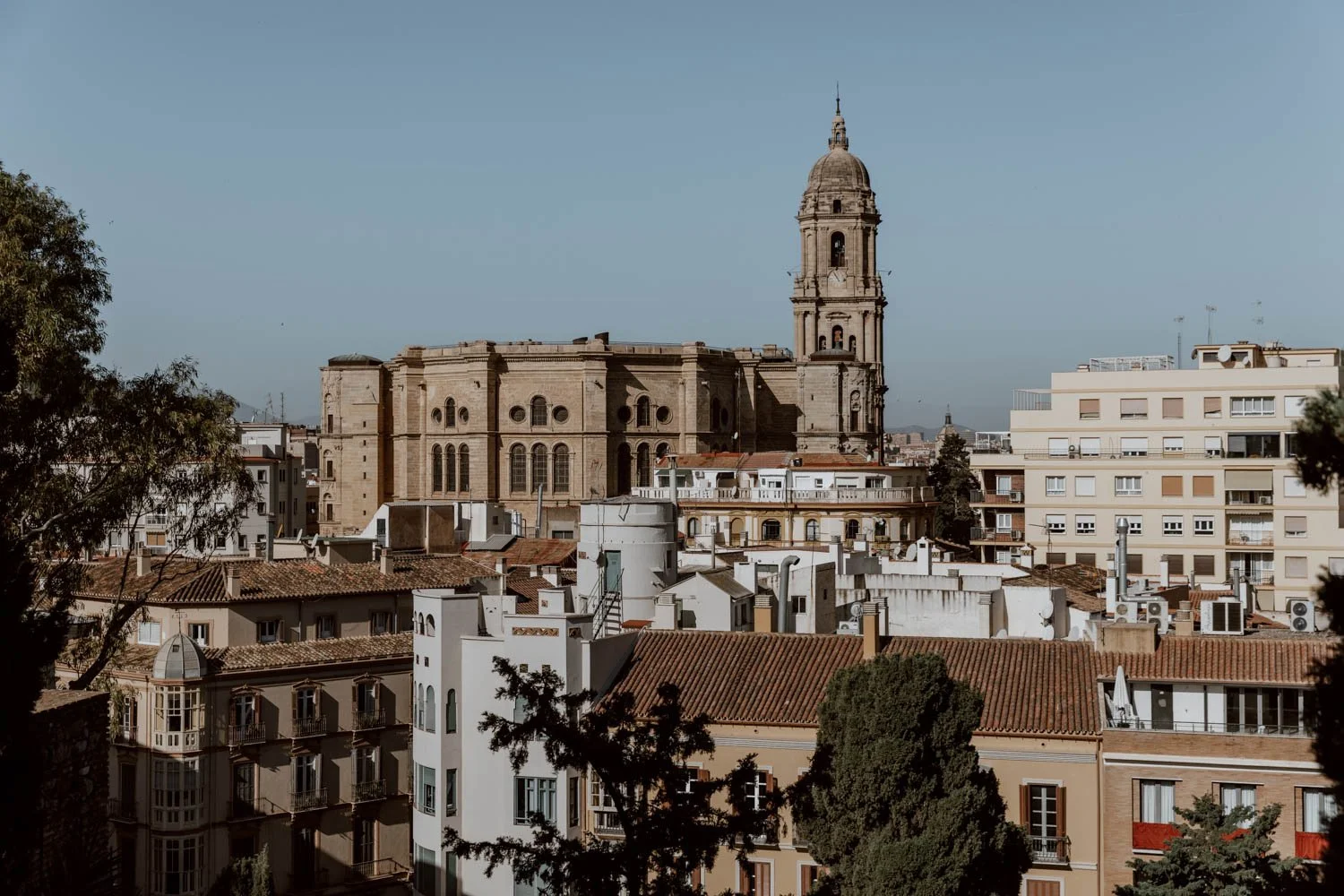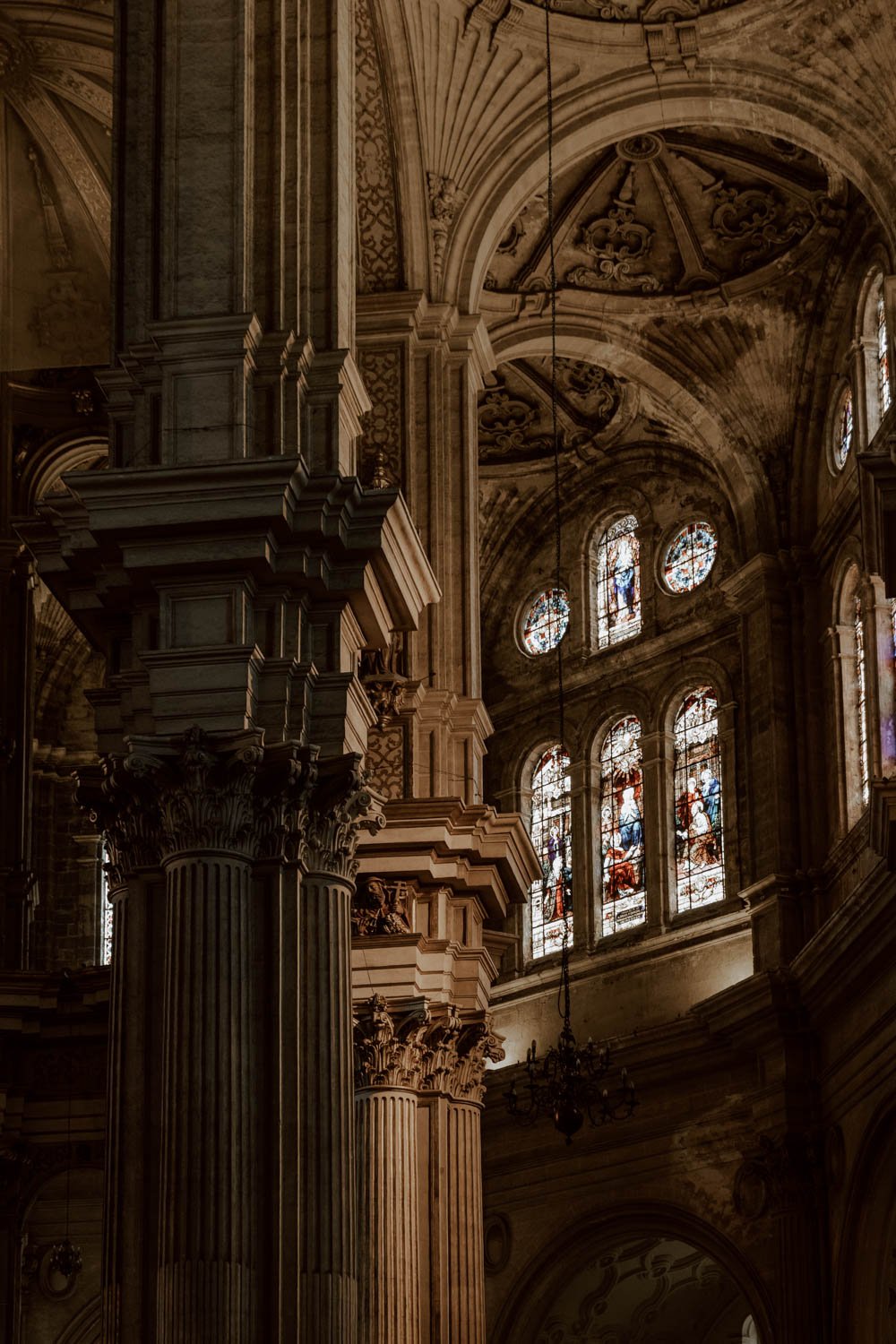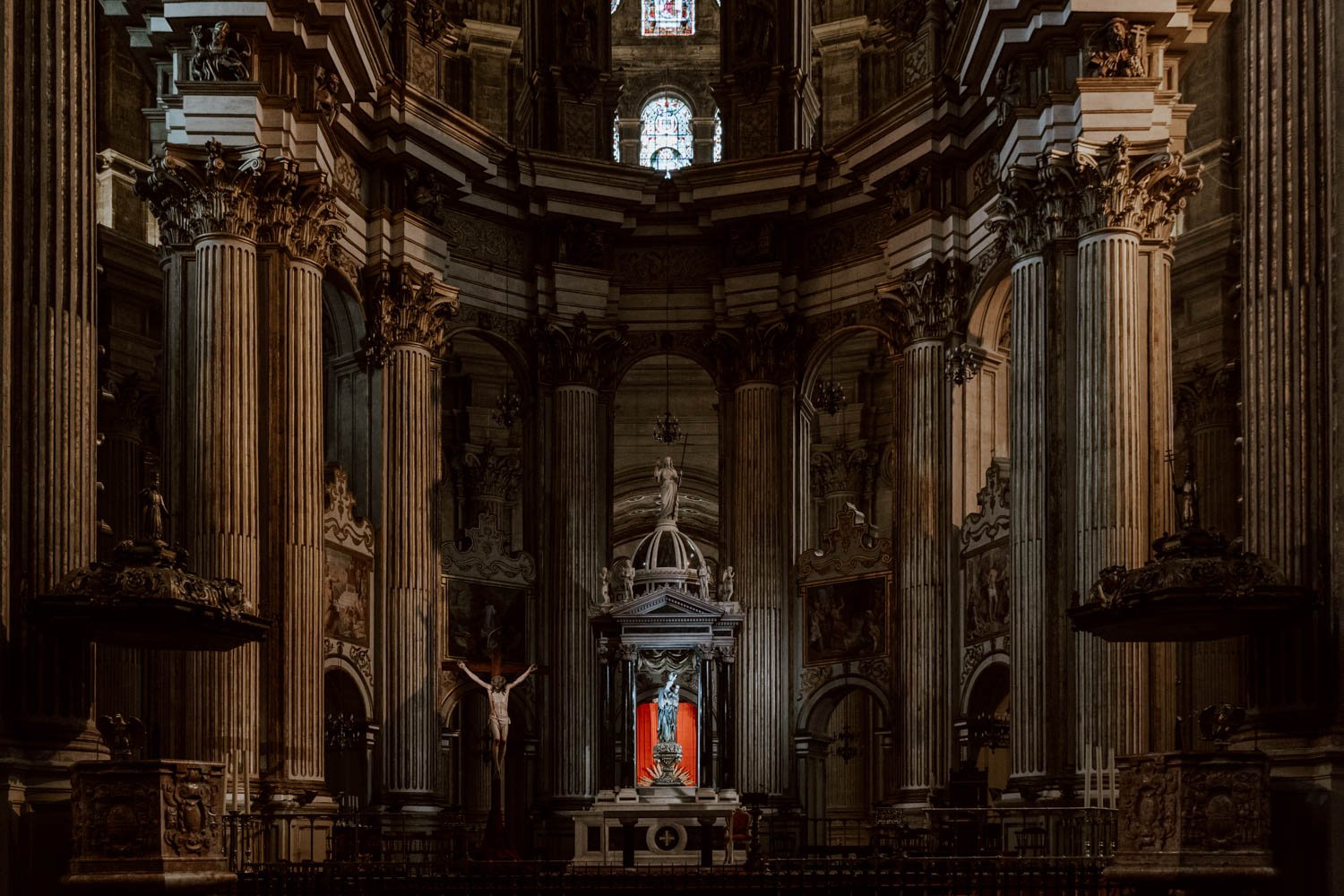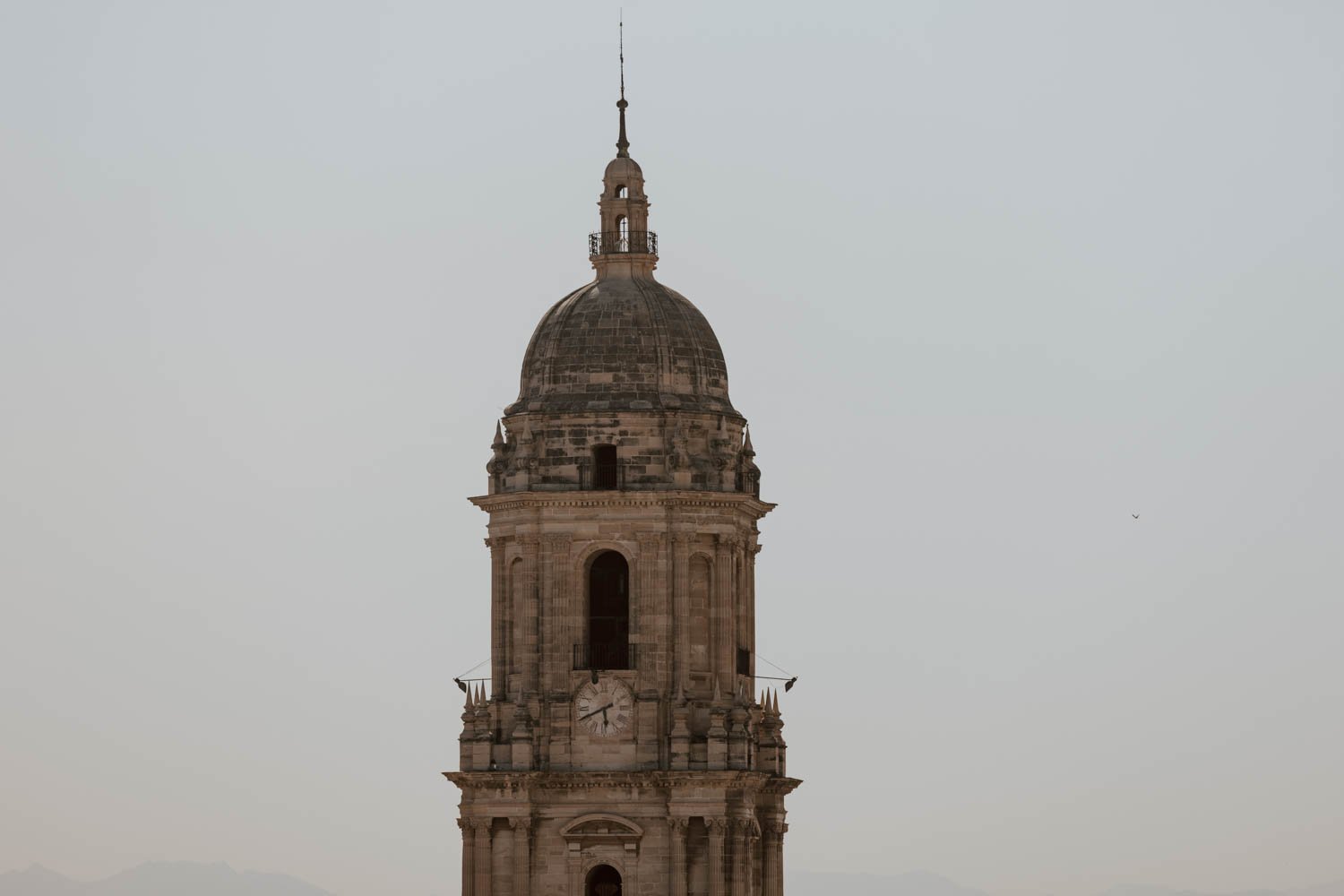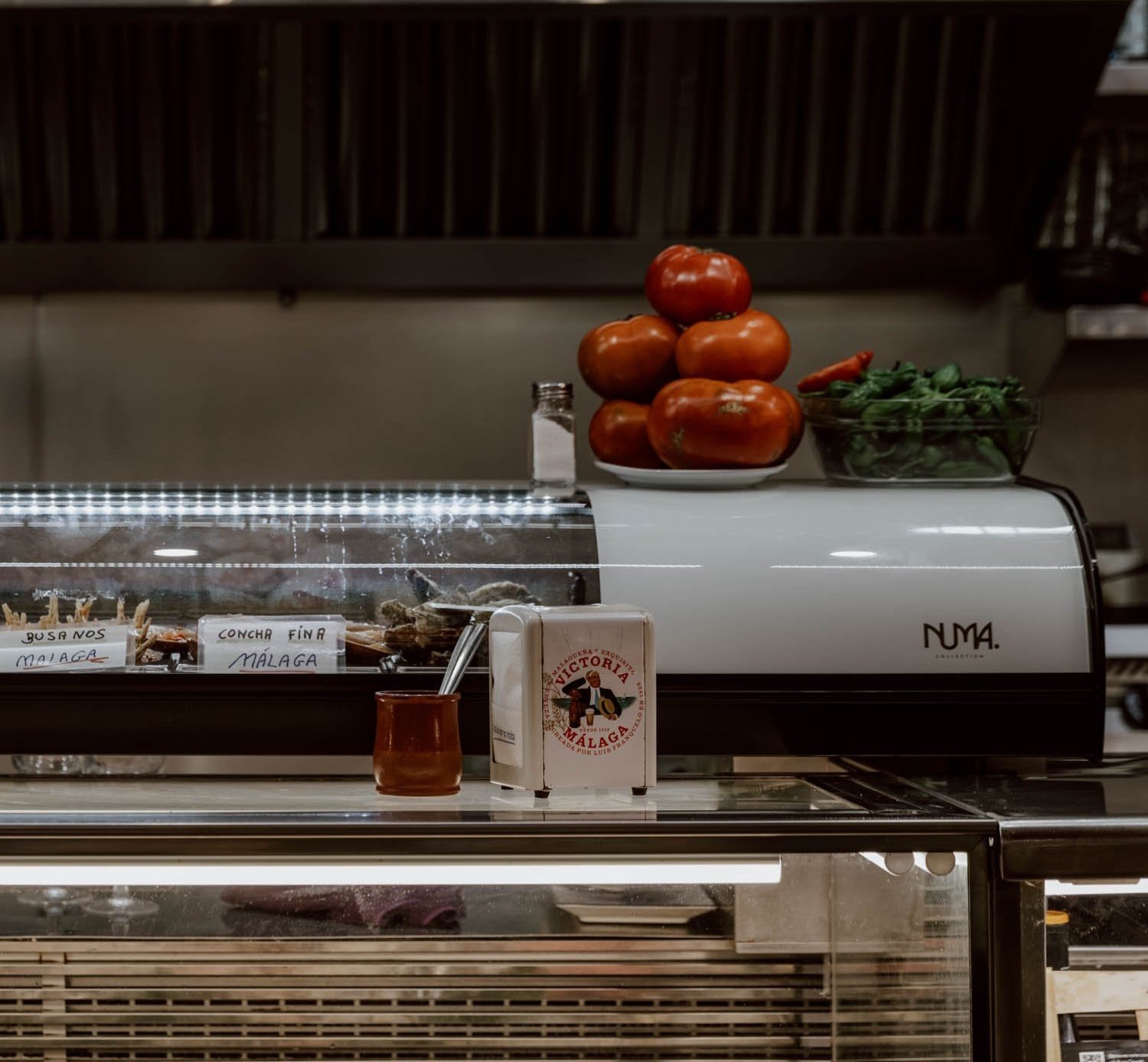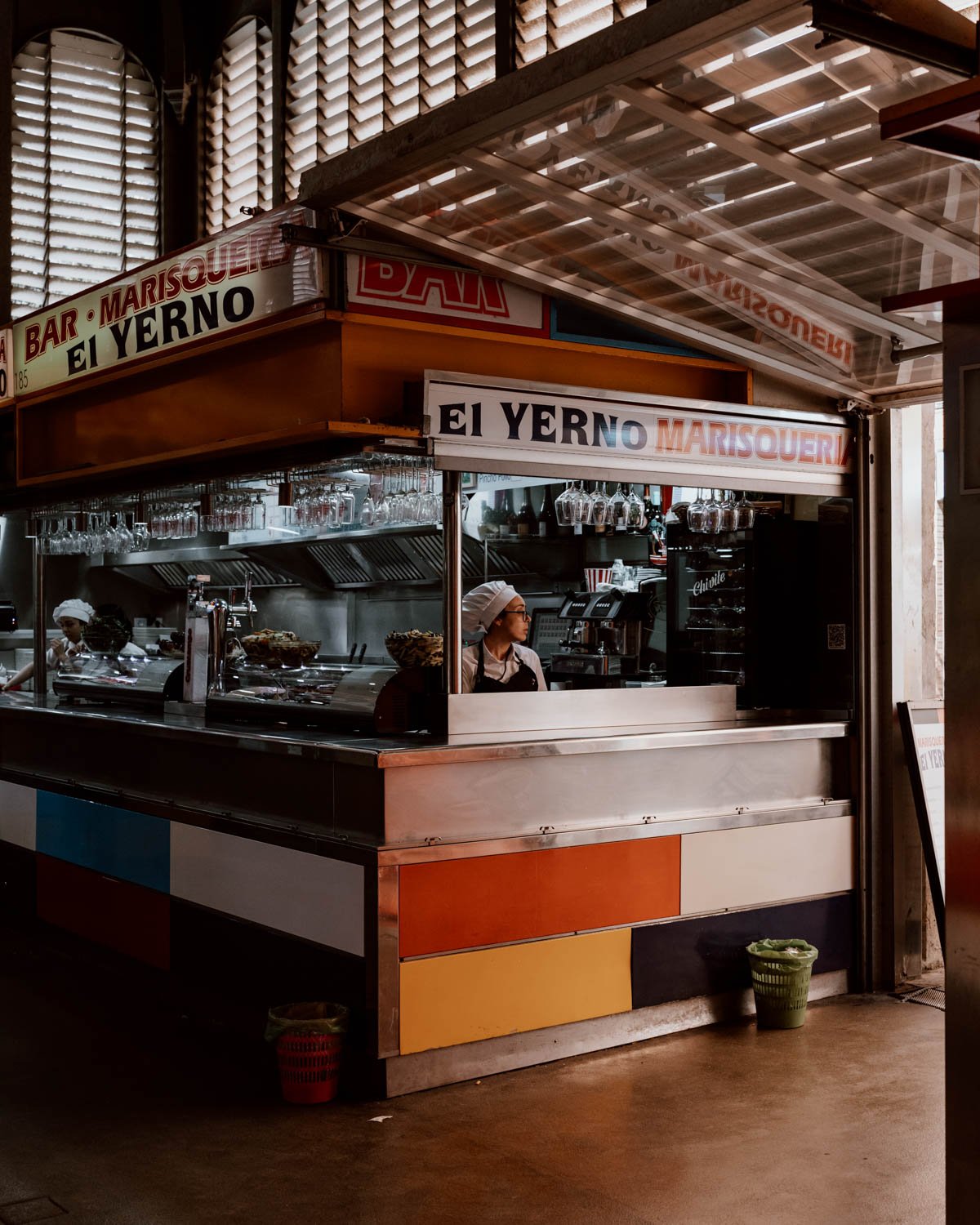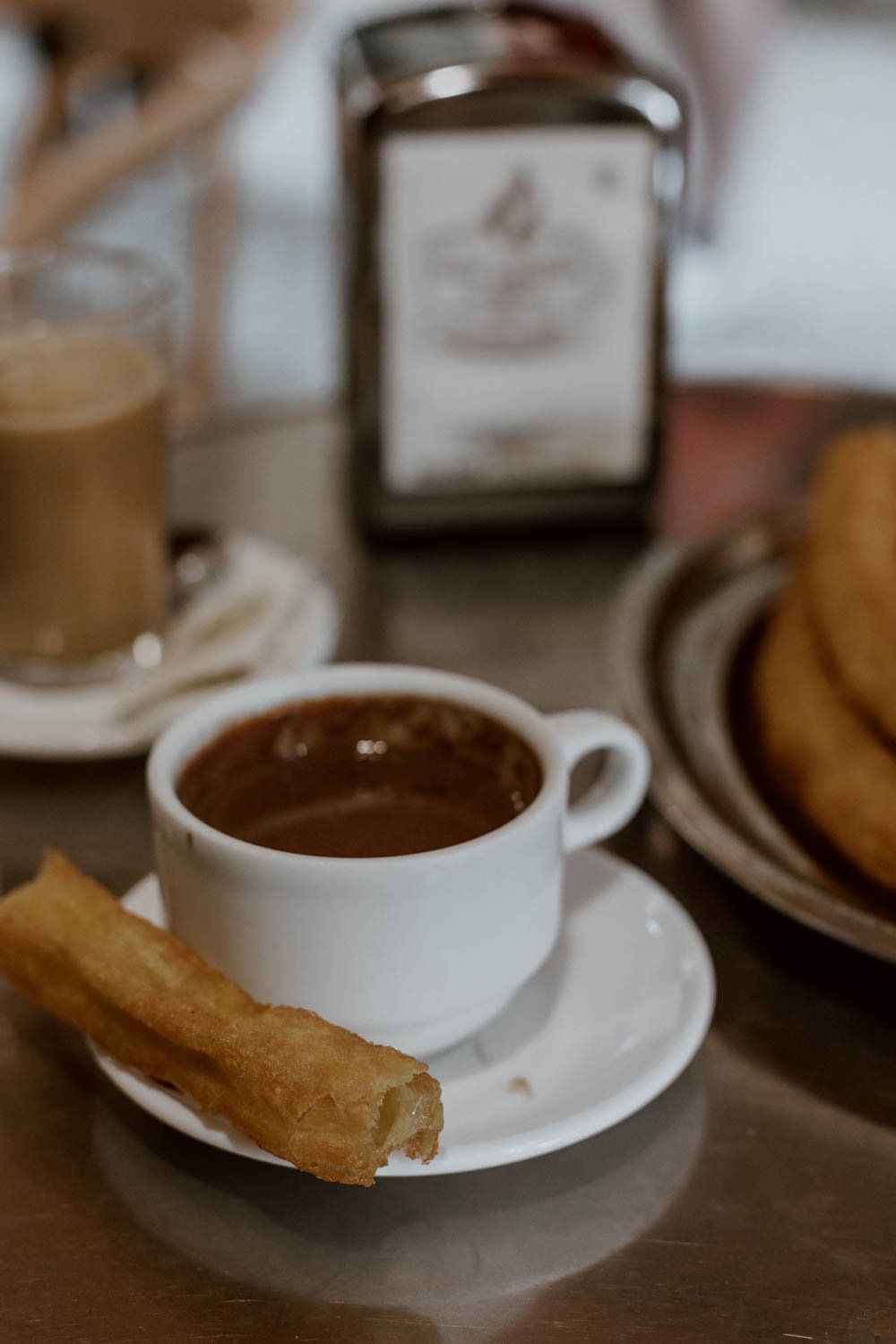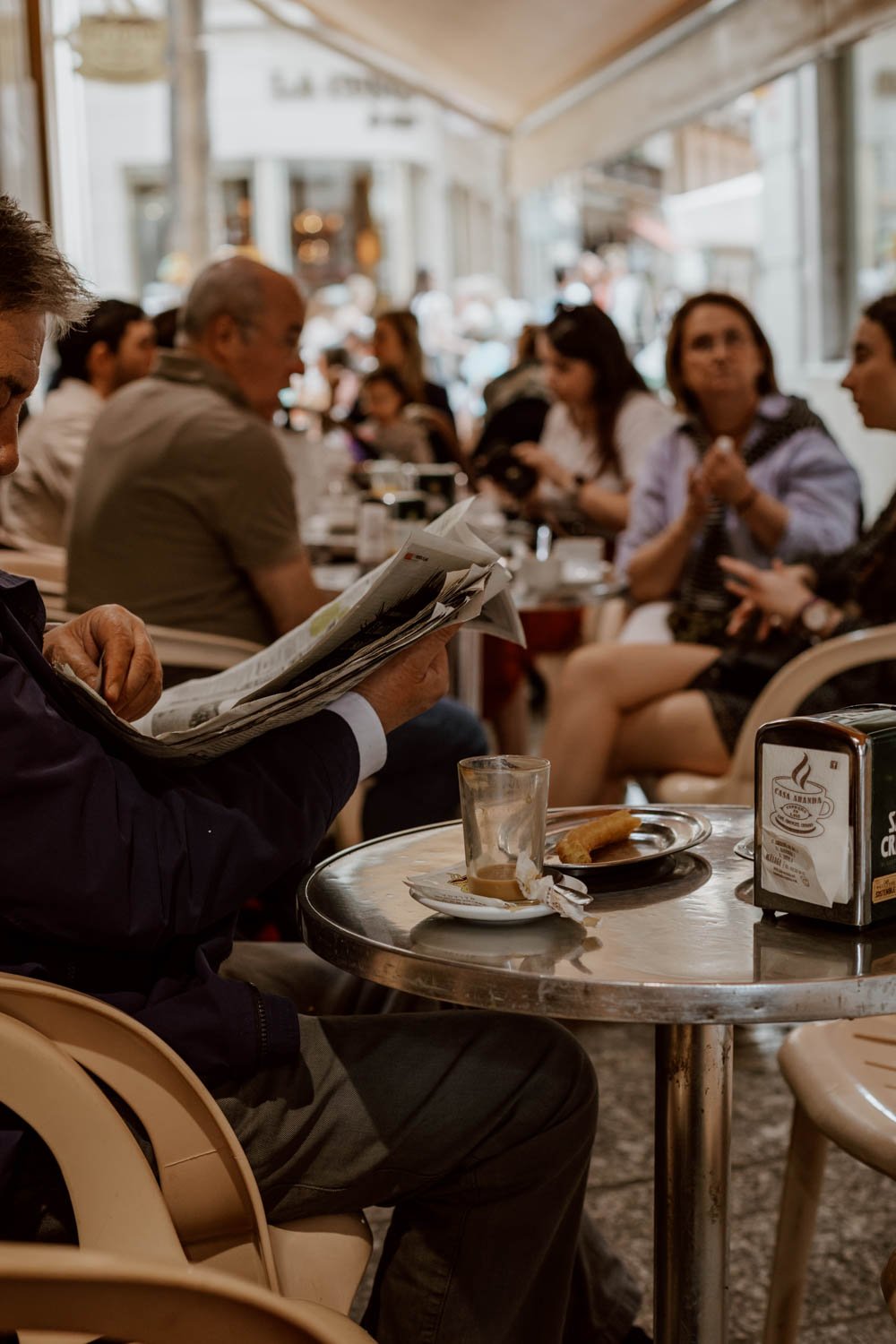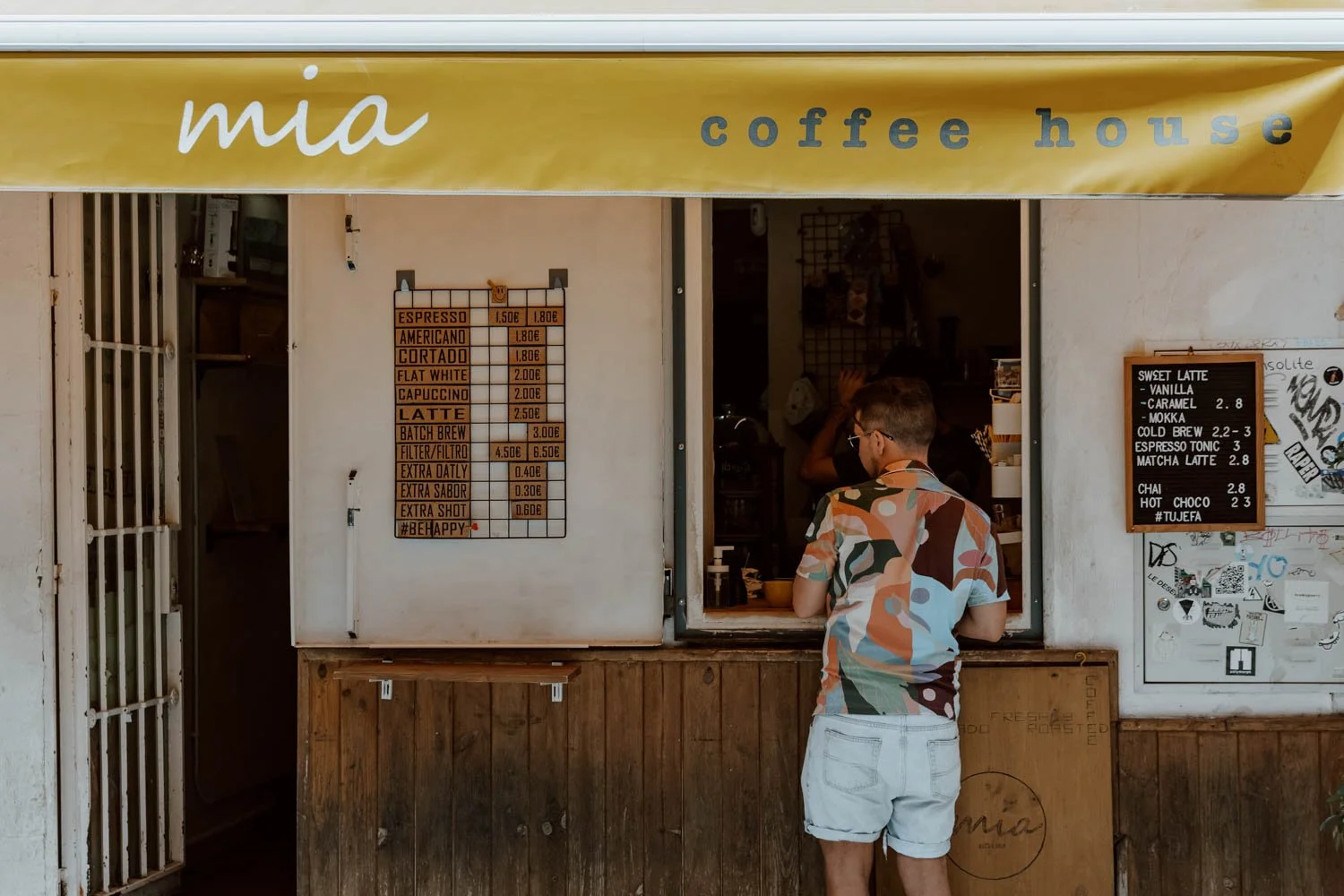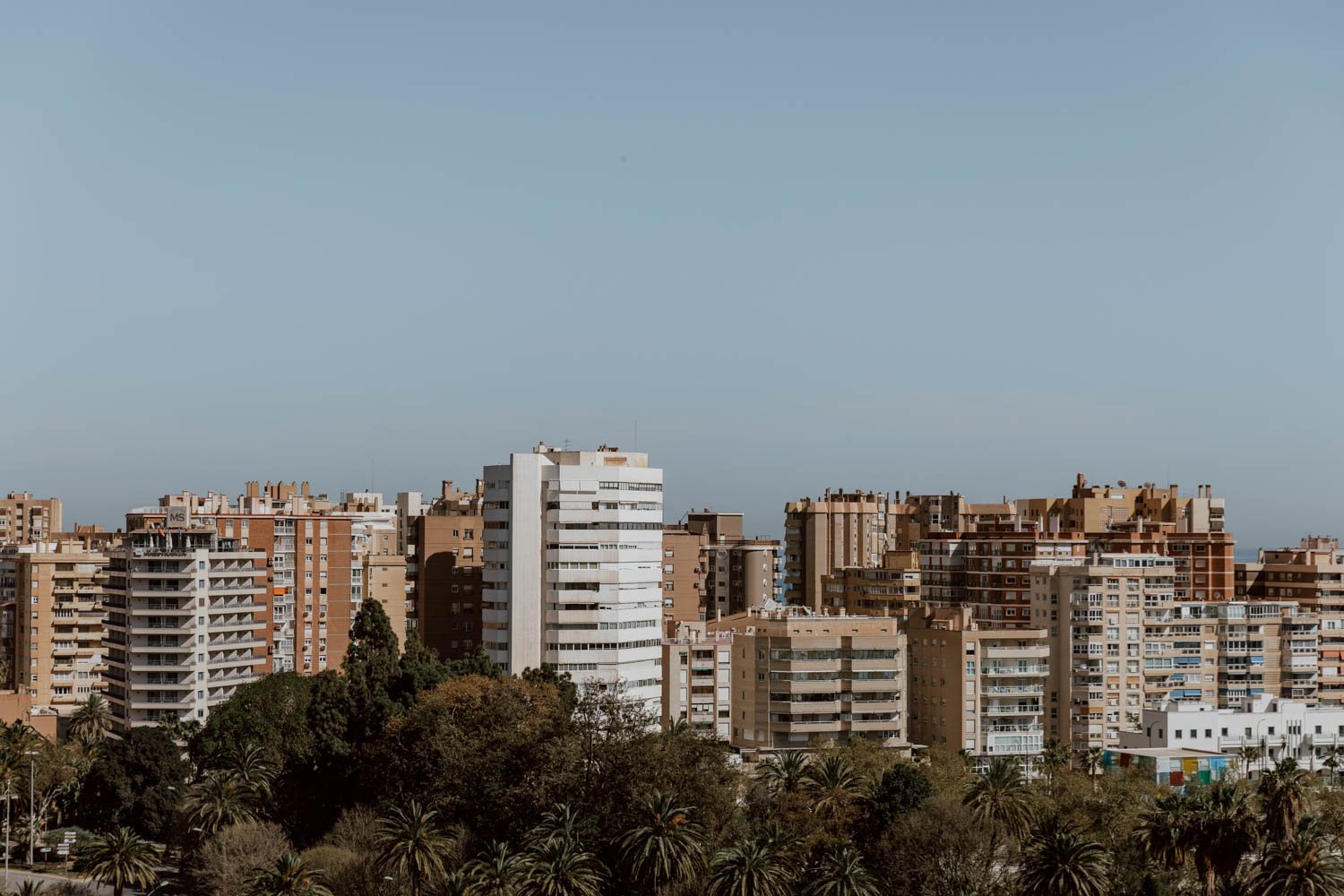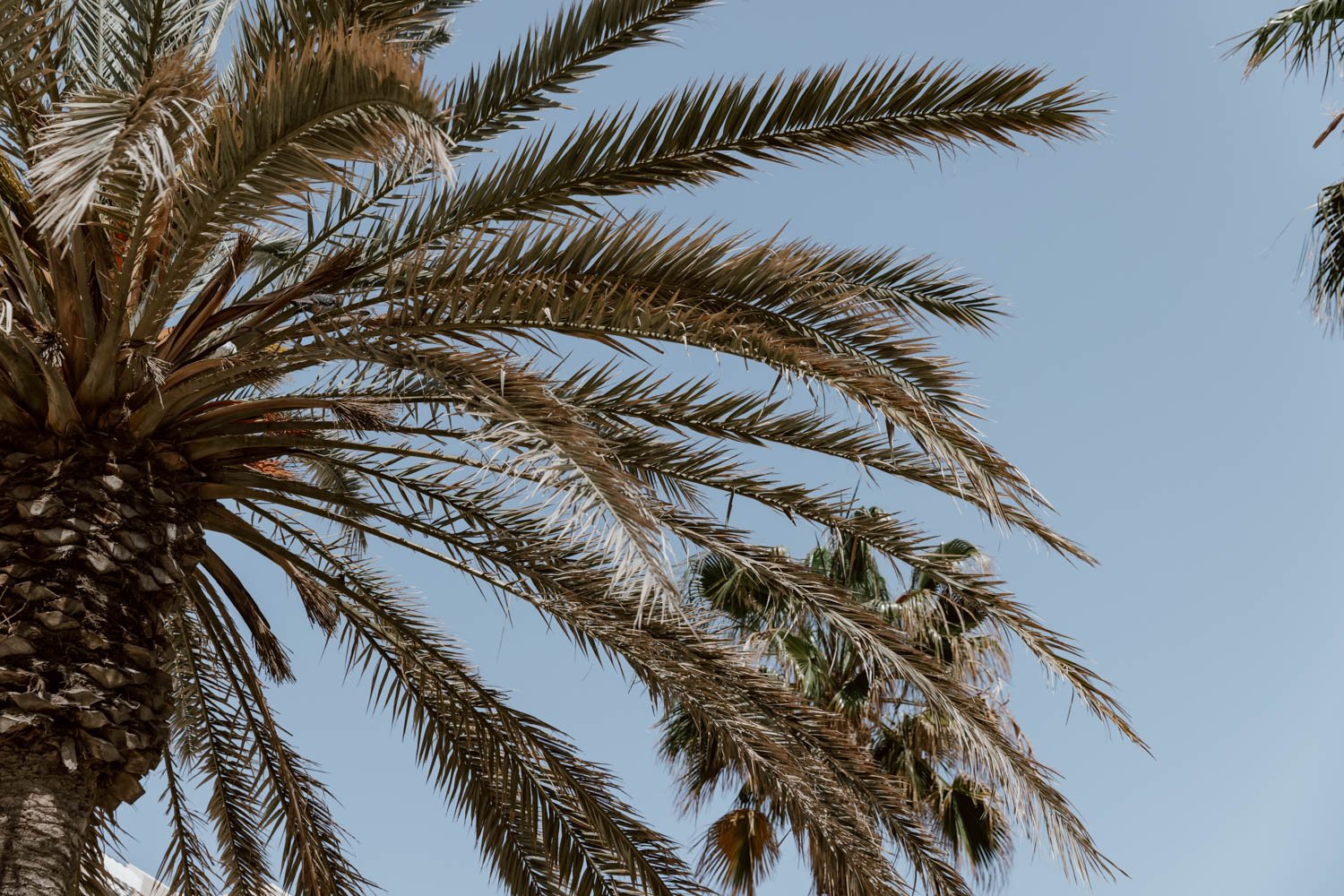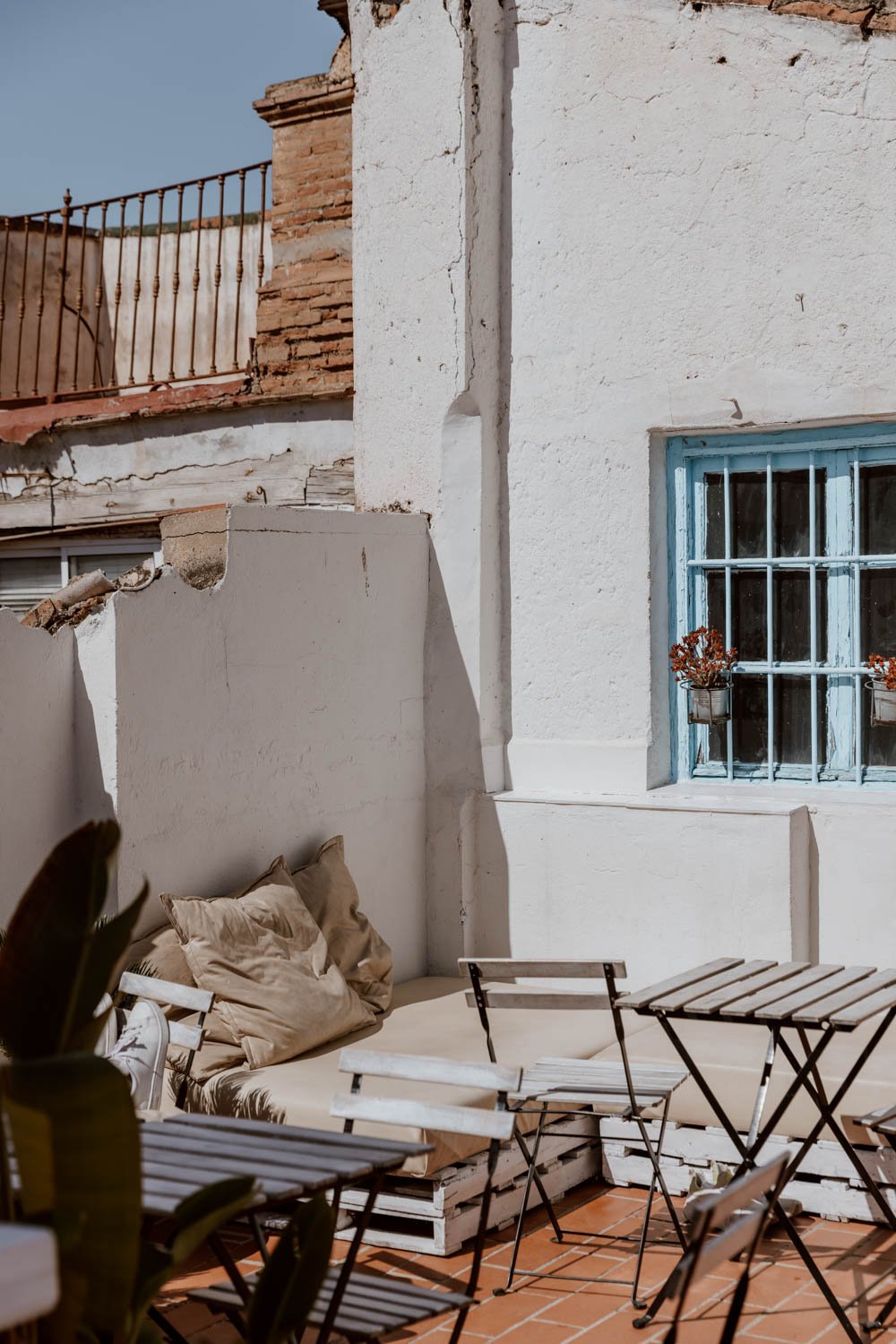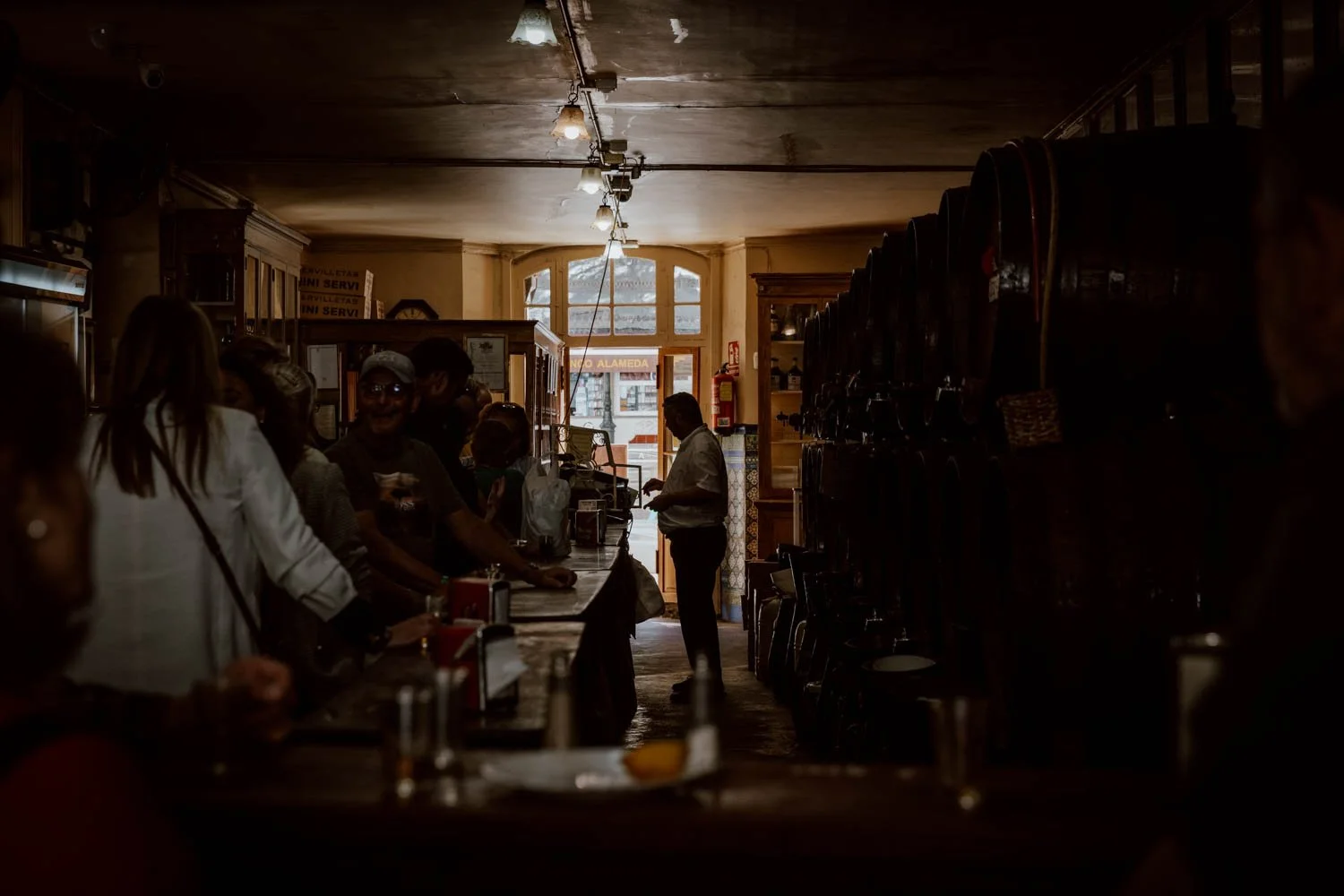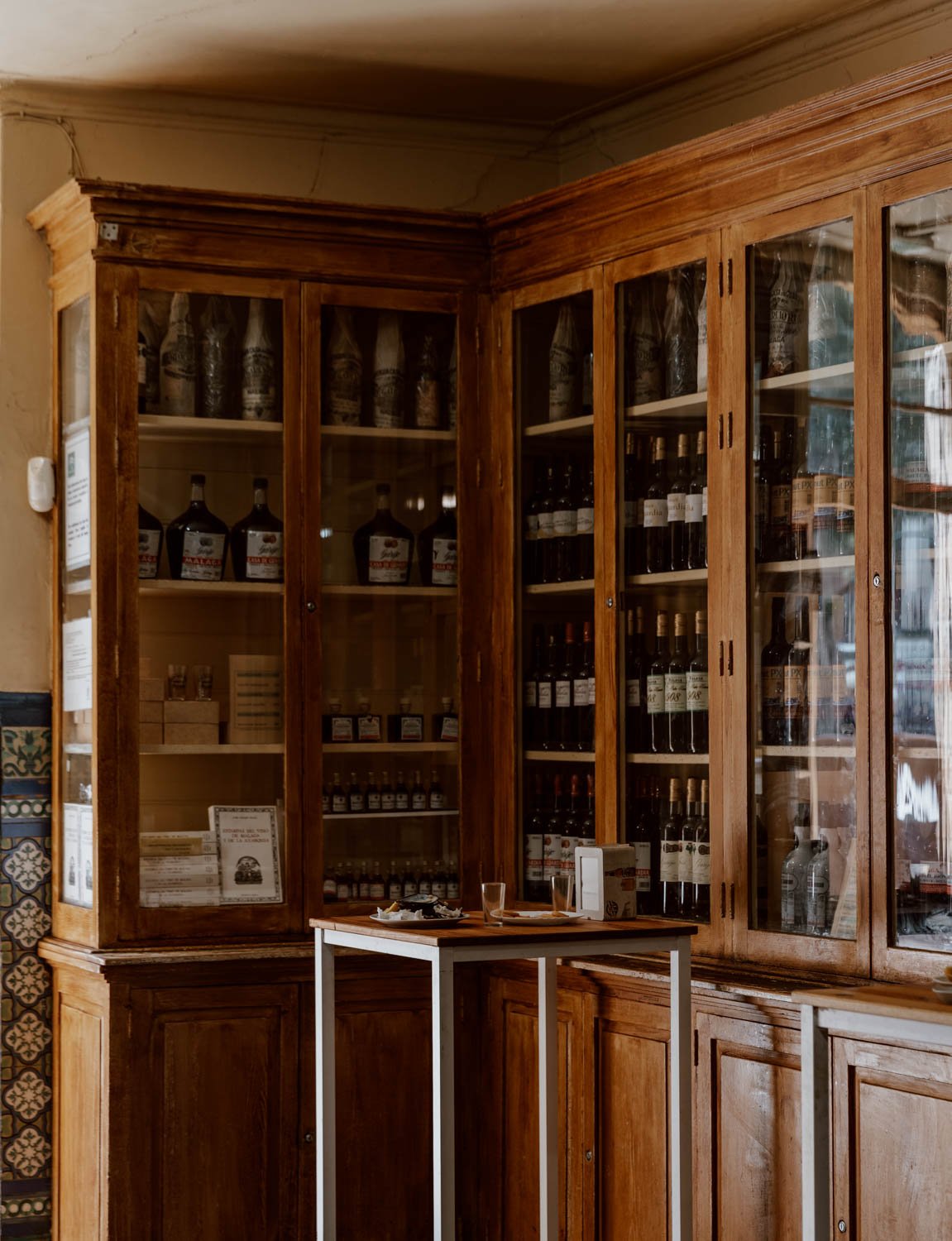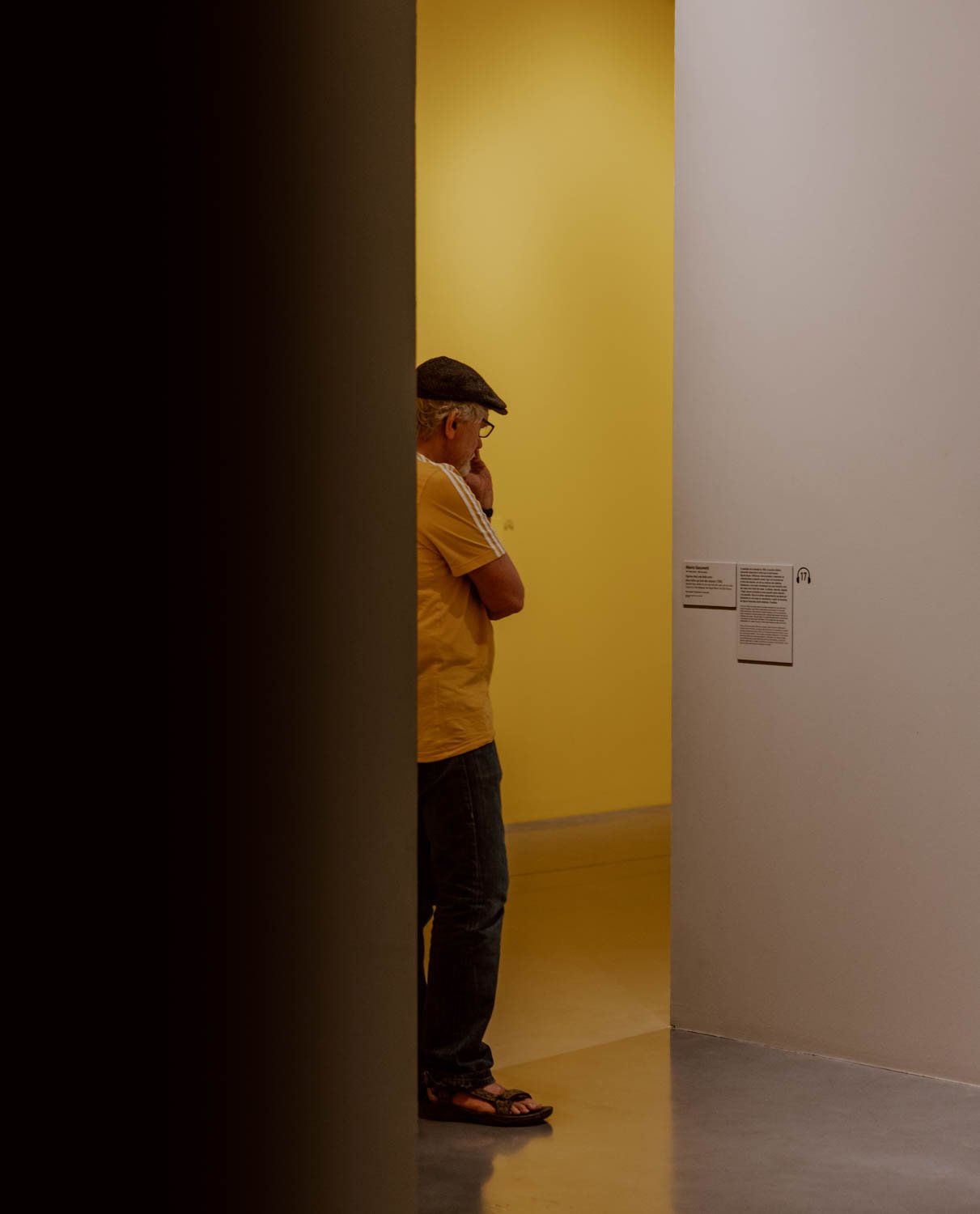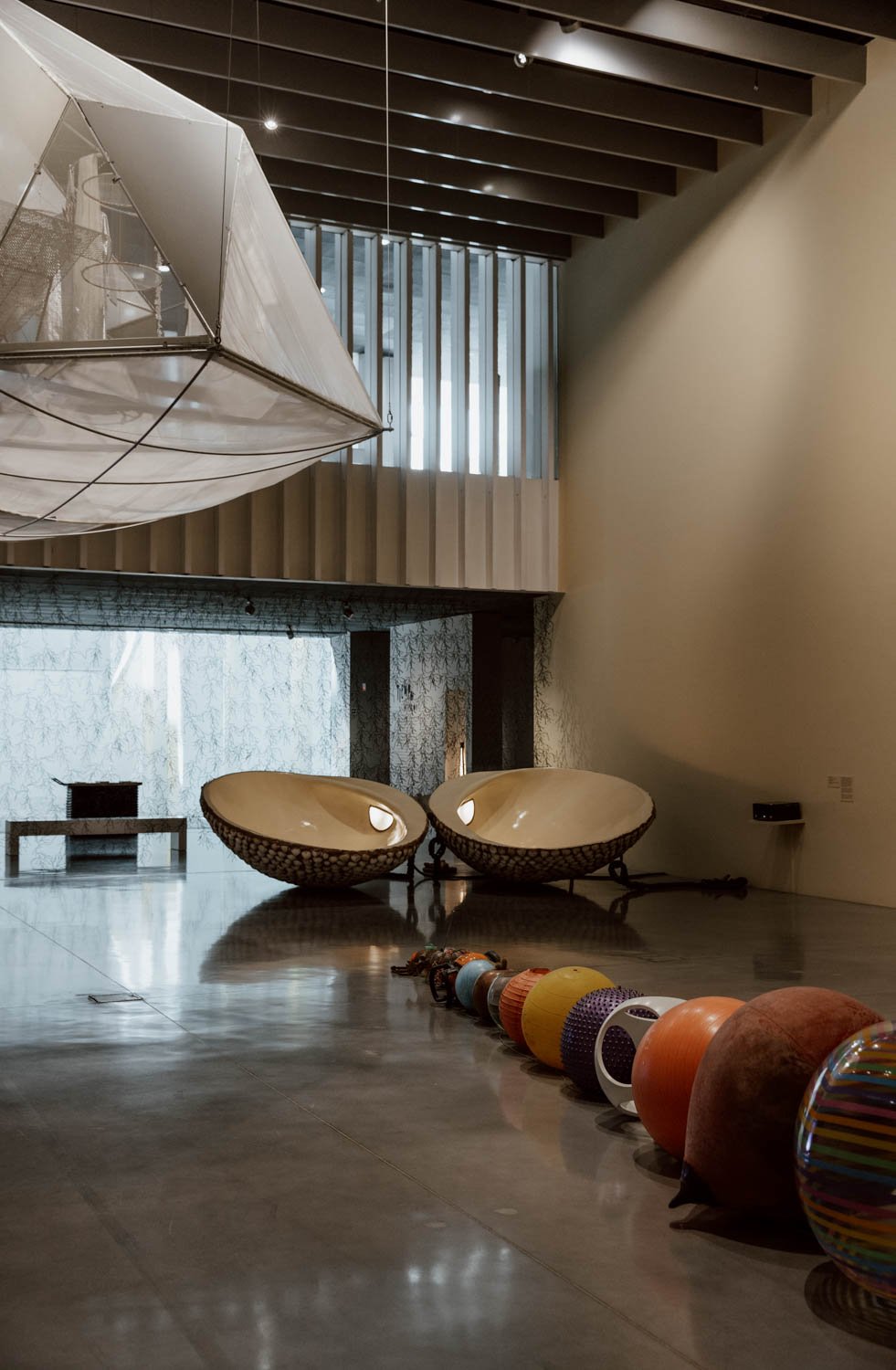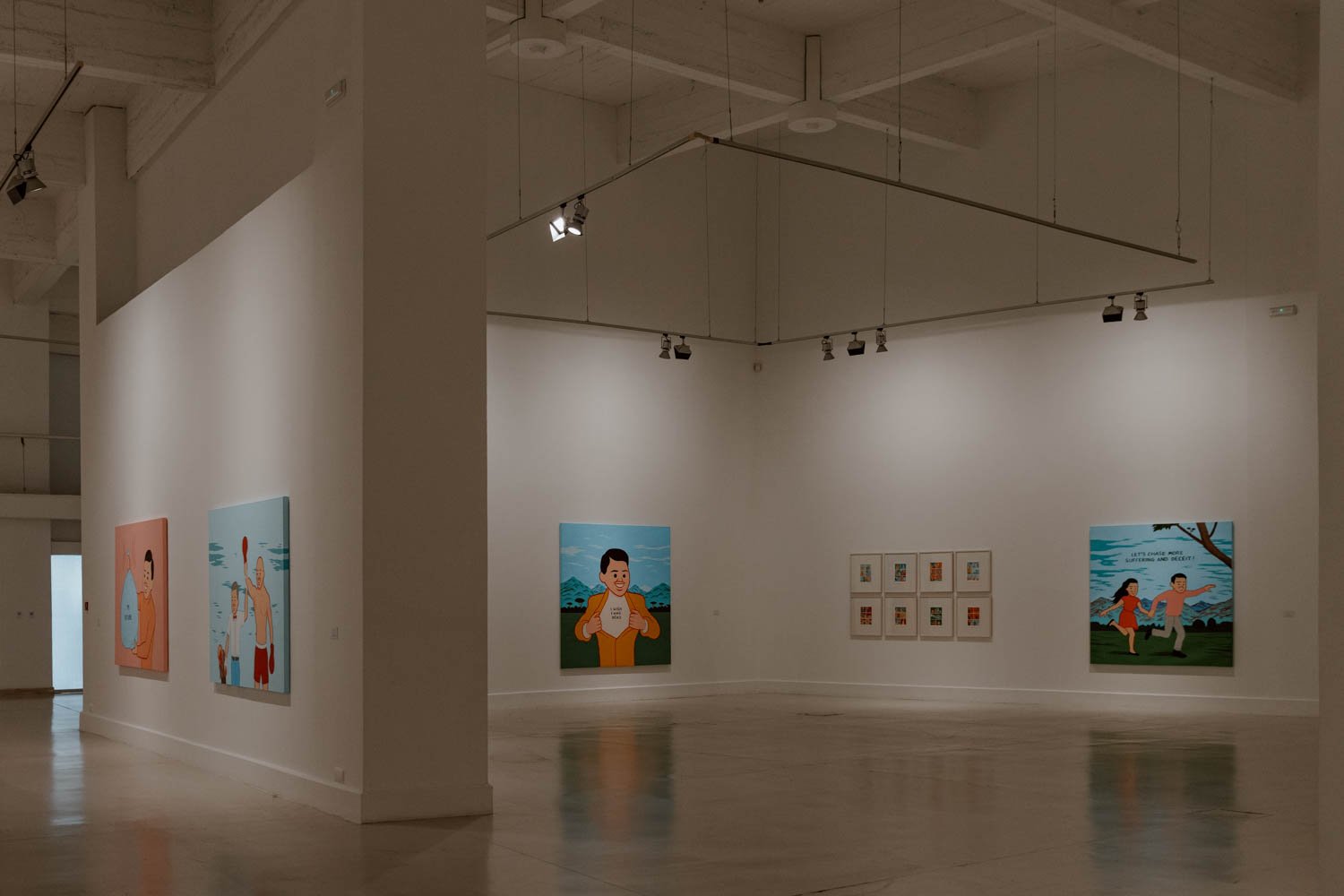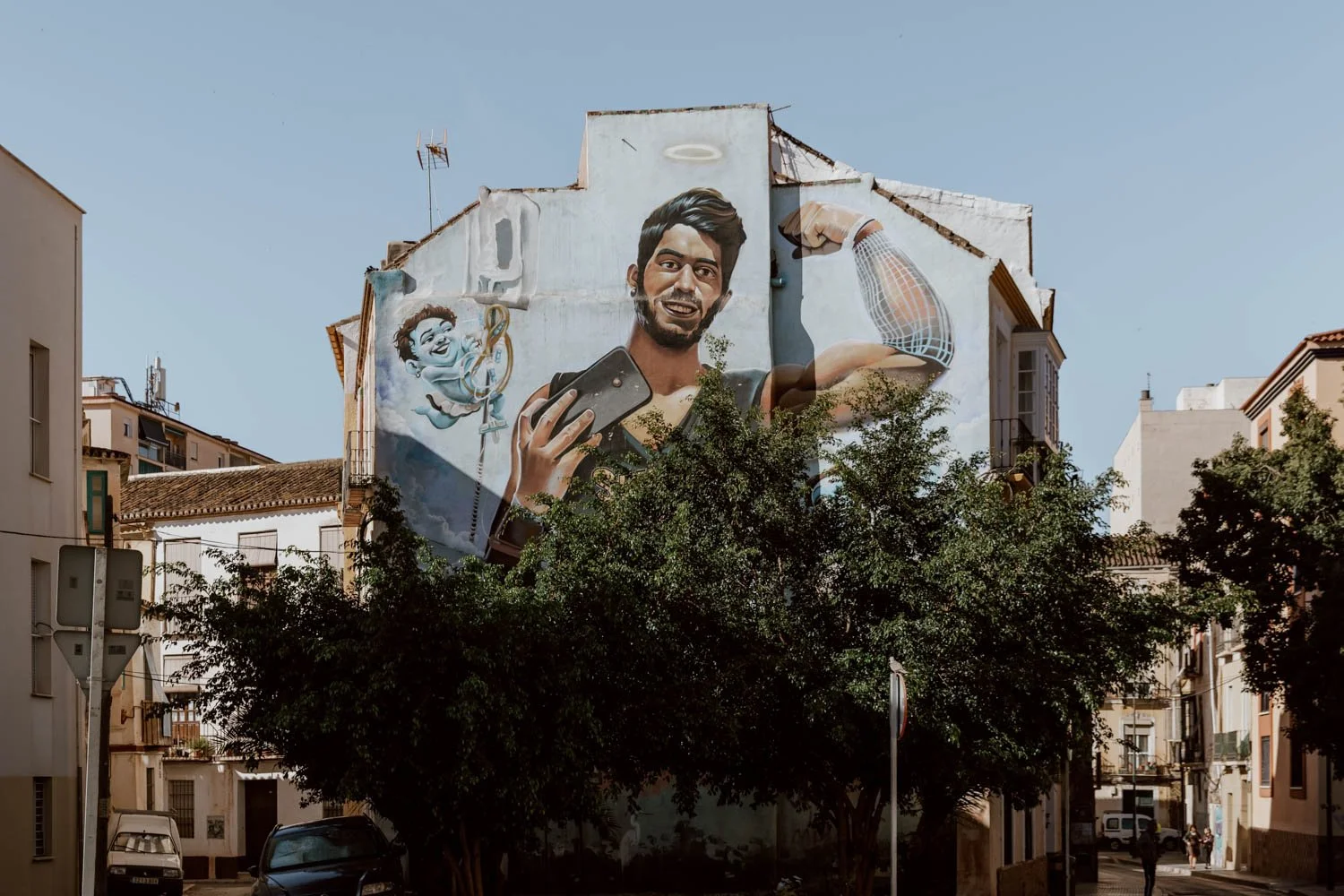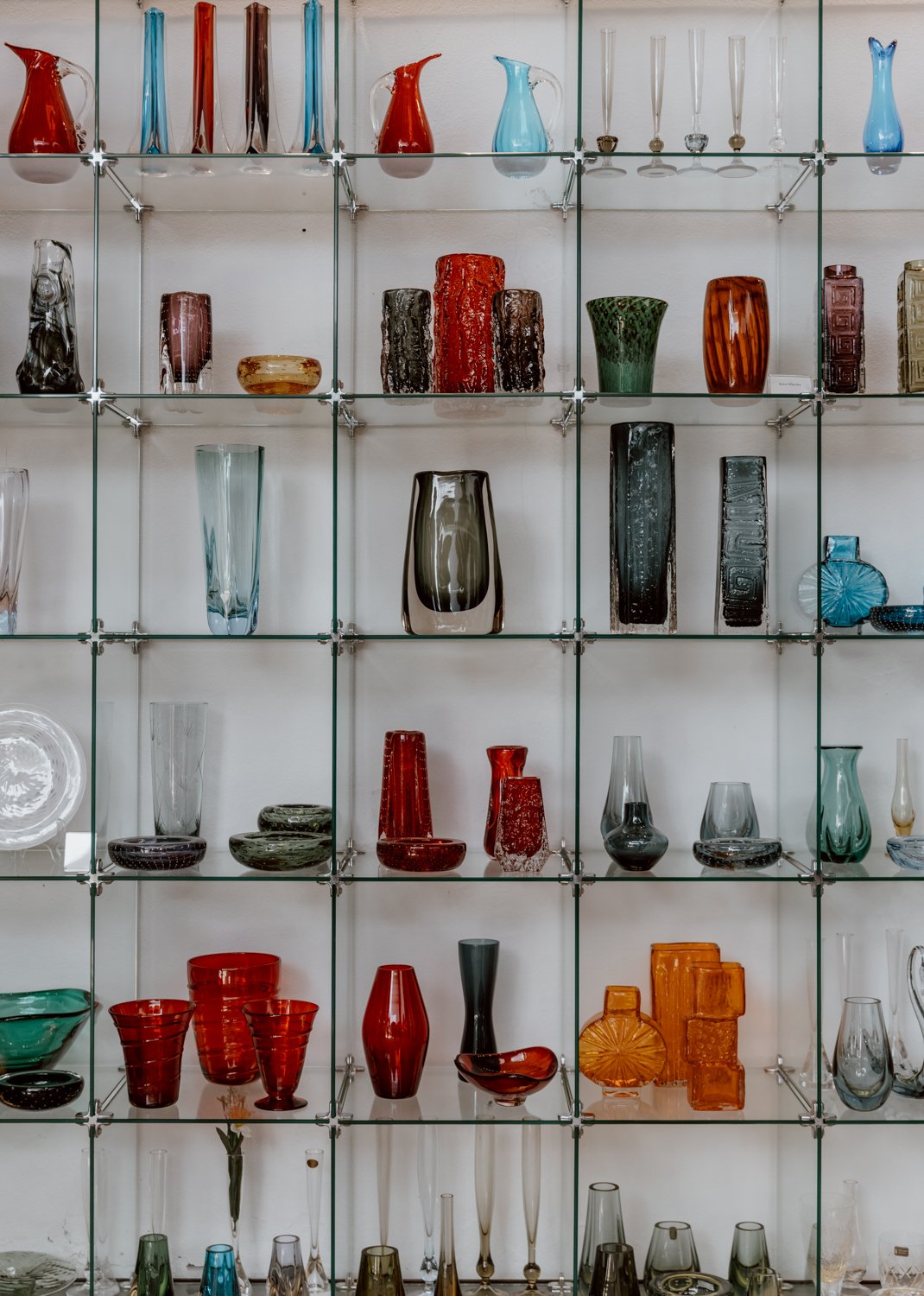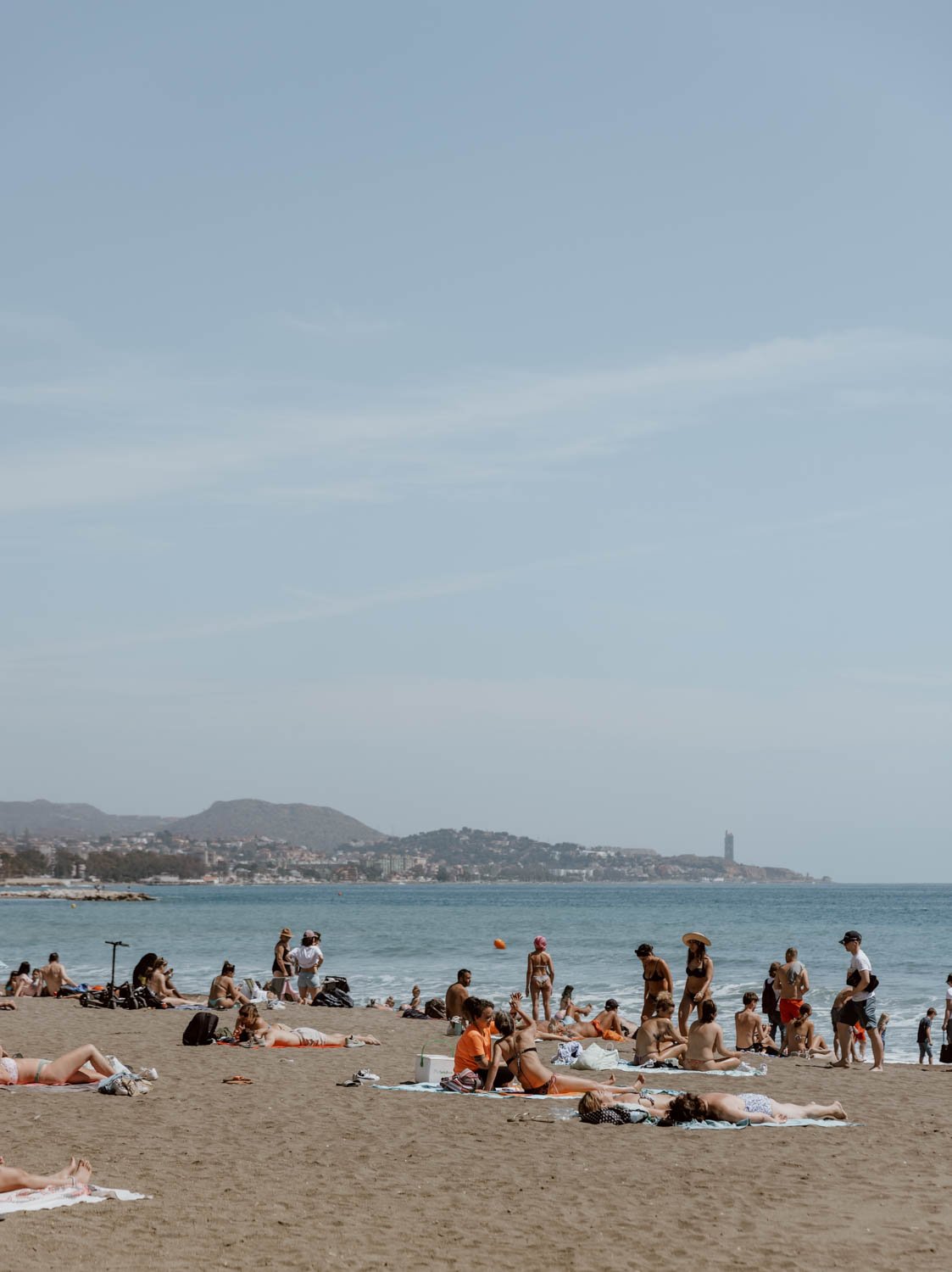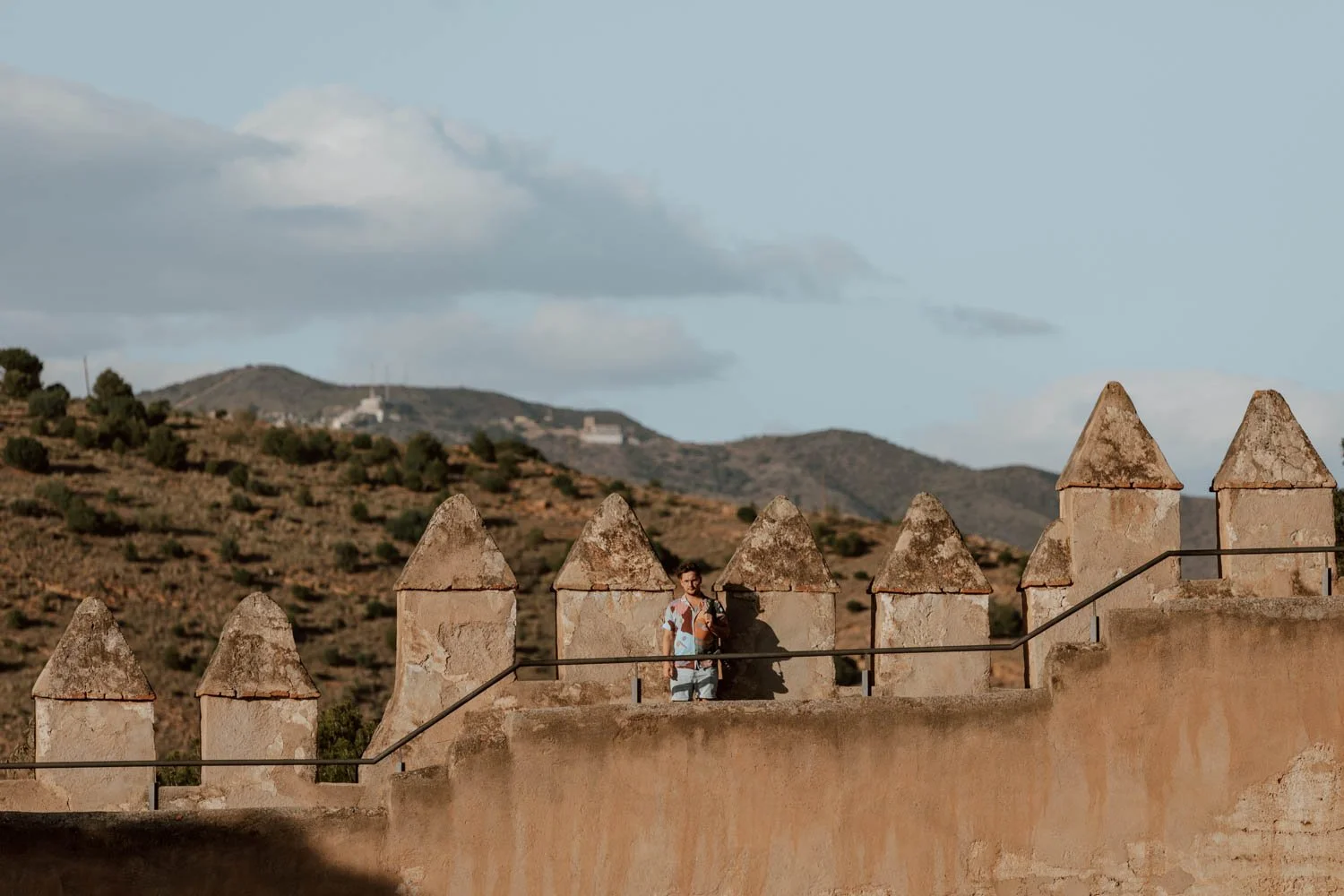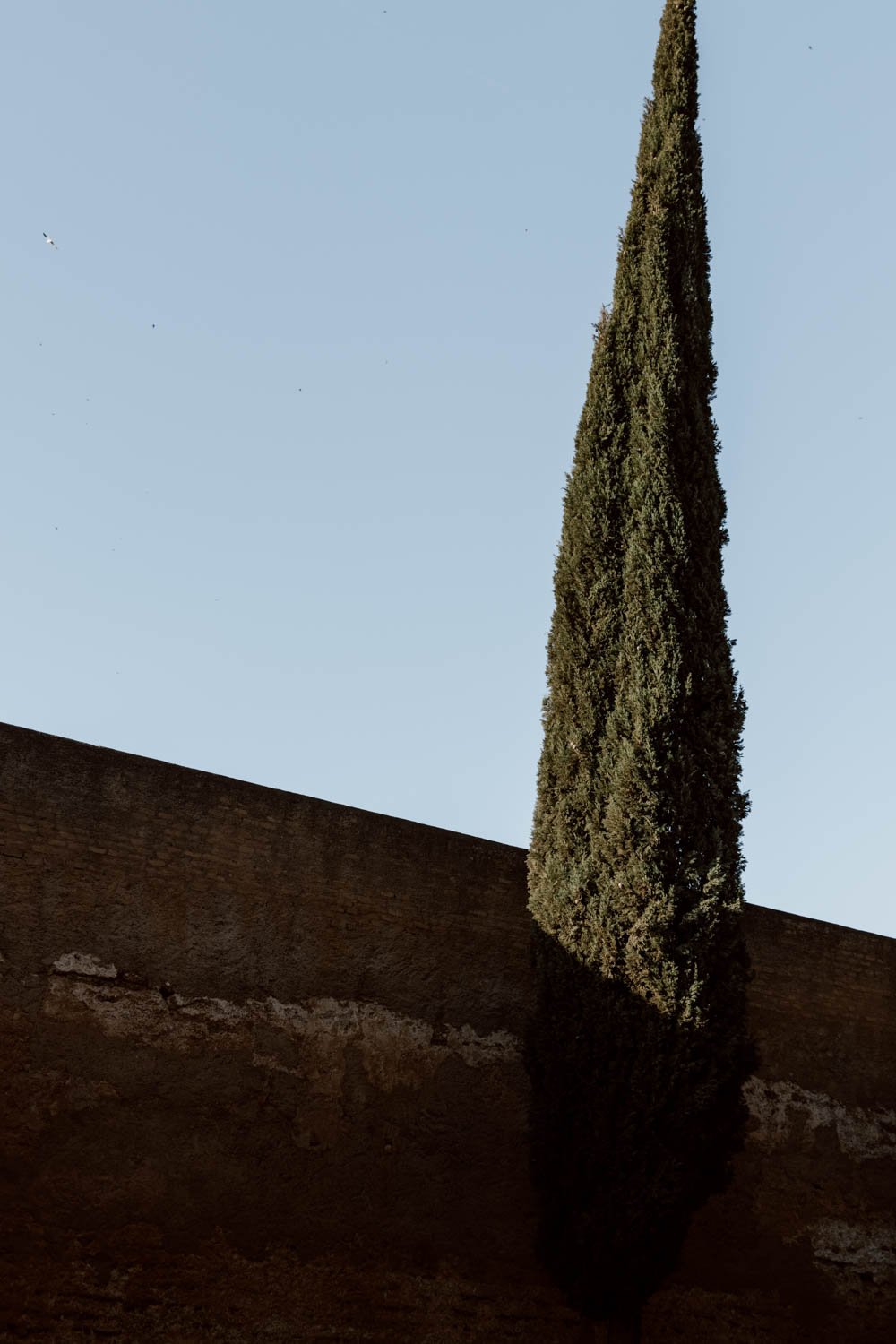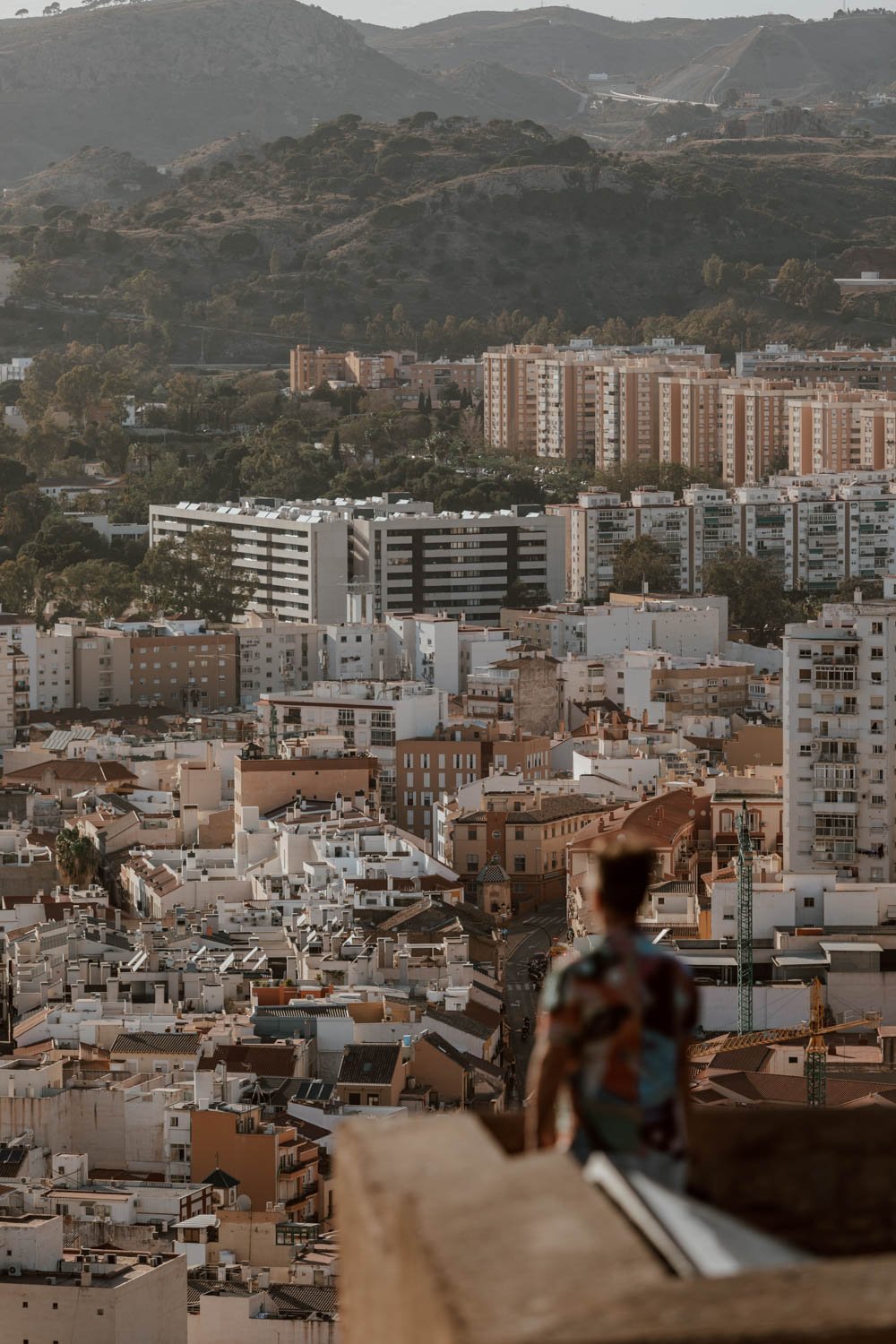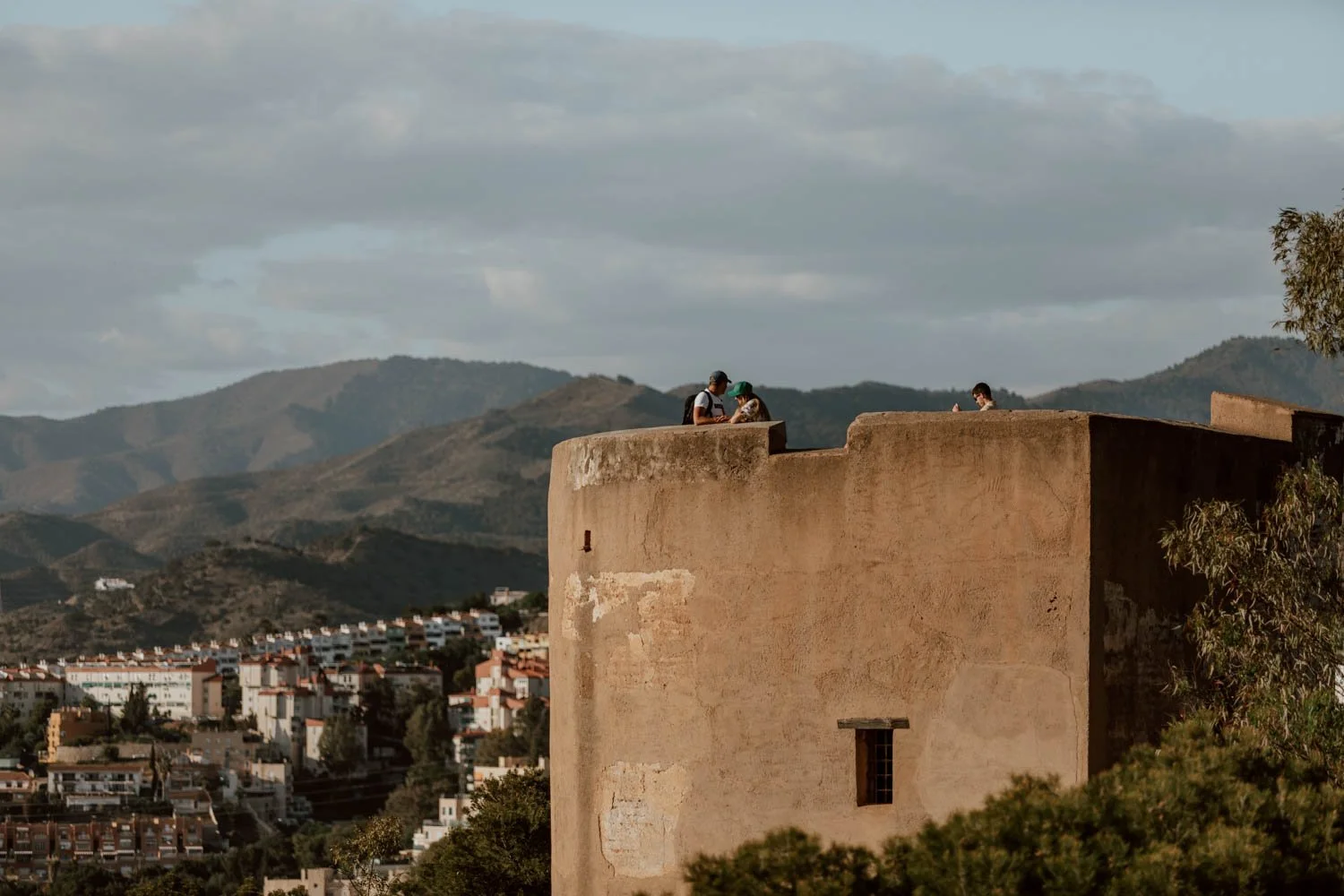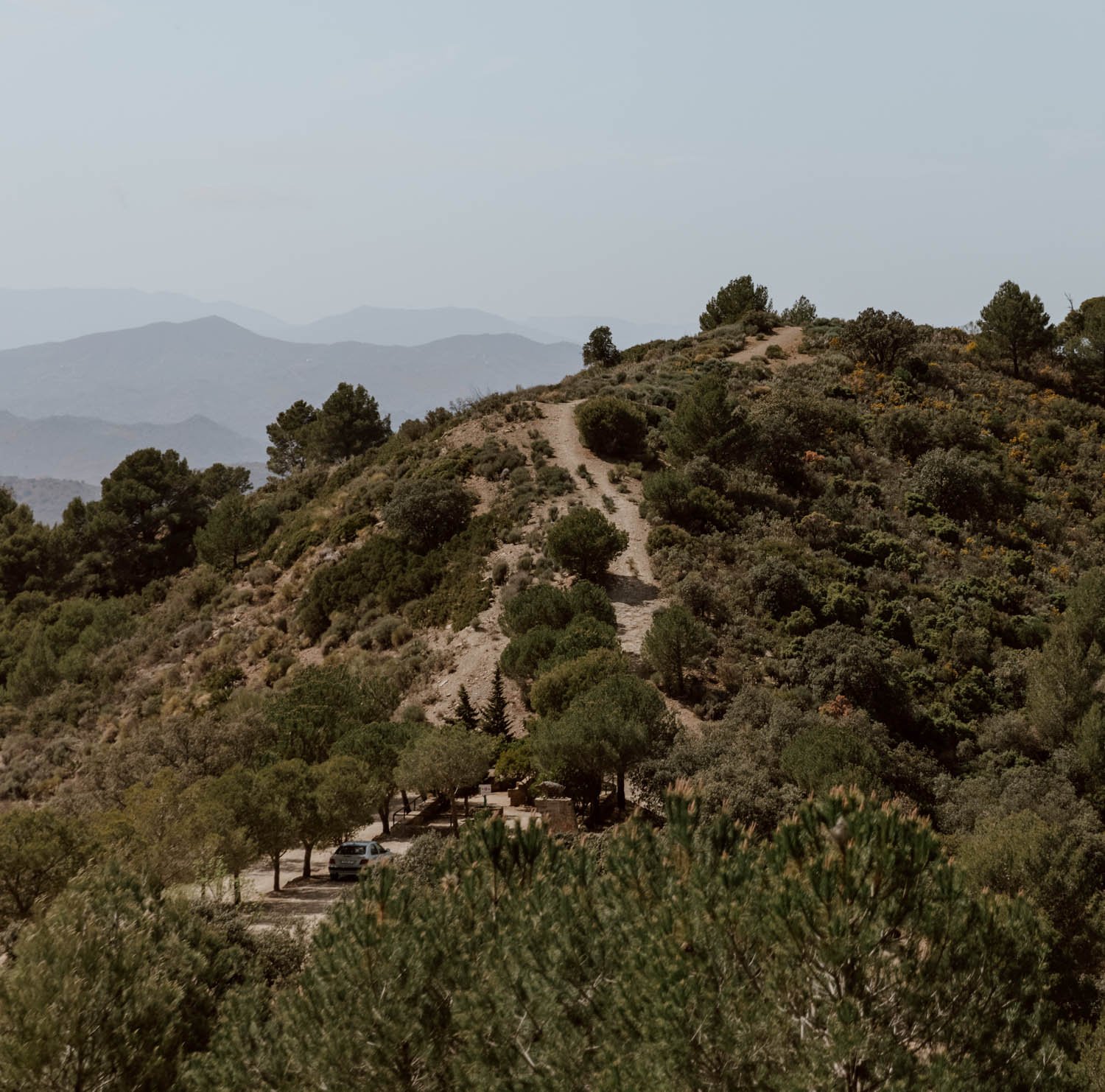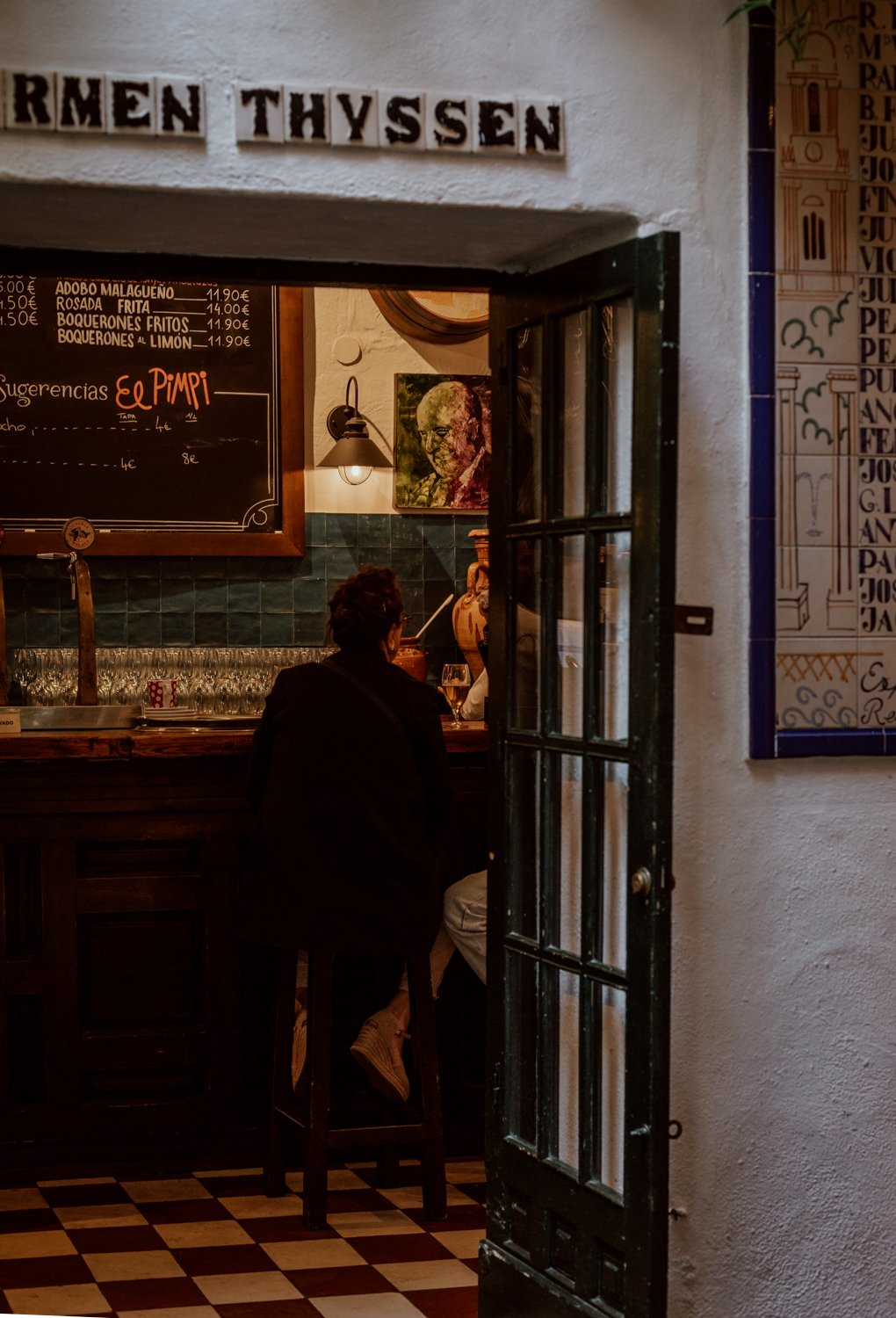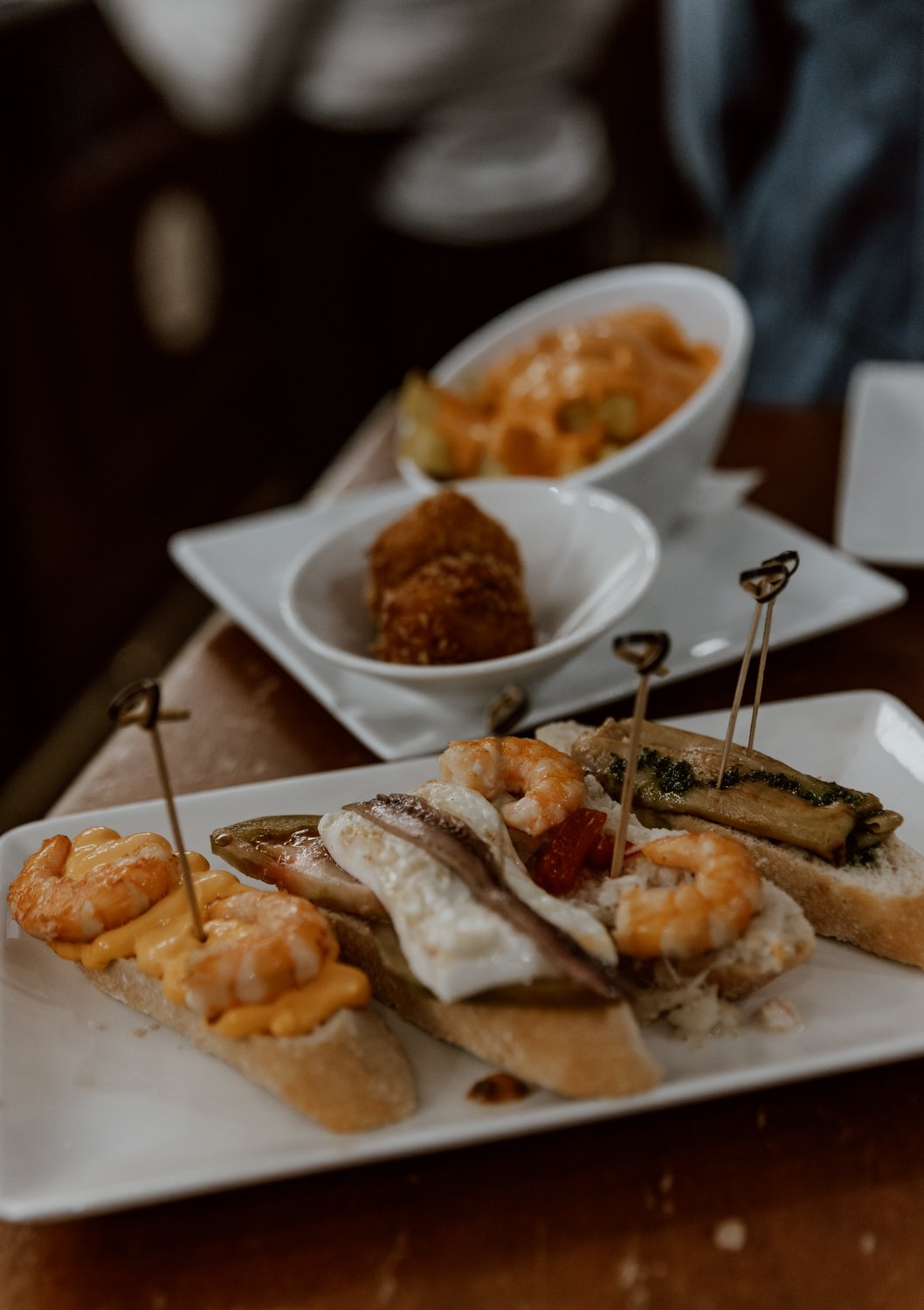There’s much more to Málaga than you may think - discover all the best things to do in the popular Spanish city, alongside advice on where to stay, eat and amazing day trips in our travel guide.
Updated October 2023
“A picture is not thought out and settled beforehand. While it is being done it changes as one's thoughts change. And when it is finished, it still goes on changing, according to the state of mind of whoever is looking at it."
Pablo Picasso
-
Culture and the capital of the Costa del Sol may not be obvious bedfellows.
With a longstanding reputation as a destination for British holidaymakers in search of nothing more than an affordable place for summer sun, fun, and perhaps a few shenanigans, many travellers have turned up their nose at the thought of a trip to this part of southern Spain.
For a while, we were those travellers; the picture was settled.
And then, a serendipitous suggestion that Málaga actually had a very different story to tell beyond an airport with cheap flight deals and clusters of high-rise hotels by the sea, made us reconsider.
We read that over the last two decades a single man had kickstarted a reinvention in Picasso's hometown, where works of culture, art, and urban redesign had transformed Spain's sixth largest city into a better place to call home, and one you'd be foolish to overlook as a worthy city break destination. That it had galleries and museums to rival some of the grand capitals of Europe. That it had layers of archaeology and civilisation from a seismic period in the country's medieval past, when wars of faith decided the fate of the Iberian Peninsula. That the city surrounded by the hills and the sea was a haven for hiking and cycling, and the ideal jumping off point for the (once) deadliest path in the world.
That Málaga - a place where the sun shines 320 days a year - was a place transformed: a place deserving of a first chance, let alone a second one.
After spending a week there in springtime, we've shared all of the best things to do in Málaga. There's also lots of personal tips and bits of advice to help you plan your trip and travel better, as well recommendations on the very best places to stay in the city, beaches, and meaningful day trips.
This is 13 Wonderful Things To Do in Malaga.
The Málaga Essentials
Explore / The 11th century Alcazaba - enjoy independently or join an excellent guide tour
Visit / The Picasso Museum (you can buy skip-the-line tickets here) then check out the Pompidou & CAC
Vantage / Take in the views from the top of the Cathedral
Sample / Gorge on local delicacies at Mercado de Atarazanas
Treat / Don’t miss the churros at Casa Aranda
Drink / Vermouth at Antigua Casa de Guardia
Trip / Spend the day walking the Caminito del Rey - go independently or with a highly-rated tour
Relax / On one of the city beaches
Eat / Tapas! El Pimpi is famous but we preferred Casa Lola
Hotels / Splurge at Vincci Selección Posada del Patio, go mid-range at H10 Croma Málaga or keep an eye on the budget at TOC Hostel Málaga
Airbnbs / Treat yourself to Doppelgänger or check our favourite Dream Loft
Best Time To Visit Malaga + How Long You Need
If you’re reading this during another dreary, drizzly day in March, then there’s good news.
Málaga has the best climate in Spain, with 320 days of sunshine on average each year. Now, this doesn’t always mean it’s hot, but it does mean that you can almost be guaranteed good weather and a shot of Vitamin D when you visit.
The city is ideal for visits from mid-March to June and then October to November, when much of Europe still feels like winter, but you need to bring a layer in the evenings the earlier / later you travel.
The peak summer holiday months of July to mid-September see temperatures regularly exceed 30°C.
In terms of crowds, Málaga is popular. Cruise ships dock at the port, and it’s common for the streets of the old town to be filled with various day tour groups from the unfathomably large ships. Aside from regular tourists and holiday makers, come the weekend there also seems to be a preponderance of Spanish stag and hen parties. Its reputation for reliably good ‘shoulder season’ temperatures and blue skies does mean Málaga’s tourism season also starts a bit earlier than you may expect, and we were really surprised when we visited toward the end of March at how busy it already was in parts.
The city also swells for its famous, traditional Semana Santa (Easter Holy Week) processions, with accommodation prices shooting up and several roads closed for the week. We were fortunate enough to witness the first couple of days of these processions, with huge religious thrones carried on the shoulders of hundreds and the discombobulating pointed-hood costumes of various brotherhoods, and they are a sight to behold, but it is very busy.
We suggest a stay of three full days in Málaga is ideal for a city break to cover the highlights and do a day trip to the Caminito del Rey, but you could happily have 5-7 nights here if you’re looking to use the city as a base to go hiking, cycling, or road tripping elsewhere, or have a few relaxing beach or pool days.
THE BEST Things To Do in Malaga
Explore The Alcazaba
Every civilisation that gained a strategic foothold in Málaga recognised the importance of Gibralfaro Hill, but it was the Islamic dynasties who left the most permanent mark there.
The Alcazaba - derived from al-Kasbah, meaning 'city fortress' in Arabic - was built in the 11th century, with thick double-layered walls, watchtowers, stronghold gates and privileged vantage points over land and sea. A defensive structure first and foremost, subsequent alterations of the upper floors to palaces by the Nasrid dynasty in the 14th century (who ruled large area of the southern Iberian Peninsula, including Granada) introduced the softer, more opulent flourishes one more readily associates with Islamic period architecture in Spain.
As the political and military climate changed through the centuries, Málaga's Alcazaba was eventually abandoned, with the building becoming used by poorer communities as housing until archaeological and restoration work began in 1933.
A surprisingly large, layered complex, this is the most important landmark in the city. Although it attracts lots of visitors, moments of tranquility can still be found in the shadows and arches, whilst there are fantastic views from all sides over Málaga old and new.
When you eventually pass through the Puerto del Jesus gate, you'll have the option to go left or right - we recommend going left first. This gently takes you up through some photogenic arches to the gardens and palace rooms, which are the most known and beautiful areas of the Alcazaba: make sure to linger over the details of Patio de los Naranjos (Courtyard of the Orange Trees) and the Patio de la Alberca (Courtyard of the Pool). It makes sense to visit these first before heading back down and over to the viewpoint on the right side (where there's also a small cafe).
Where + When | The Alcazba is in the centre Málaga, and the main entrance is by the small Roman Theatre and small tourist information kiosk in Plaza de la Aduana - find it here on Google Maps.
There is also a lift nearby, which those with limited mobility can take up to the top level.
In the summer season (1st April-31st October), it's open from 9am-8pm, and in the winter season (1st November-31st March), it's 9am-6pm. Last entries are permitted up to half an hour before closing, but we strongly recommend giving yourself at least an hour and a half to explore.
Tickets | It's €3.50 for general tickets, €1.50 for certain concessions. You can buy tickets in advance on the official website here, but there are also several easy-to-use ticket machines at the main entrance, so you can also simply turn up.
Alternatively, if you'd like to go deeper into the history of Málaga, the Islamic period in Spain, and the legends of the place , check out this highly-rated guided visit of the Alcazaba.
The main thing to know in advance is that you can also buy a discounted combined ticket for the Alcazba and Castillo Gibalfro (which we feature later in this post but, long story short, we do recommend you visit both). Valid for 48 hours from your first use, it's €5.50 for adults and €2.50 concessions on the combined ticket - you can buy this combined ticket on the same website or at the machines.
Entry is free for everyone on Sundays after 2pm.
Good To Know | The Islamic period in Málaga ended on 18th August 1487, after the four-month 'Siege of Málaga’ saw the Catholic monarchs take back the city. A few years later, the important city of Granada would be surrendered by the Nasrid dynasty, marking the end of Muslim rule in the Iberian Peninsula. If this period interests you, then consider adding the Alahambra in Granada - considered amongst the greatest example of Islamic architecture in the world - to your Andalucia itinerary or doing as a day trip tour from Málaga.
Visit The Museo Picasso Málaga
“I want to draw the mind in the direction it’s not used to and wake it up. I want to help the viewed discover something he wouldn’t have discovered without me.”
He may have lived and died in France, but Picasso was for ever a malagueño.
The city's most famous son, Pablo was born and baptised in the city but left before he became (arguably) the best known artist in the world. Living here until the age of 10, and visiting a few times later with family, the last time he stepped foot in the streets of Málaga was in 1901 at the age of 19.
It never truly left him though, with the artist discussing the idea of a hometown museum dedicated to his works in 1953. However, the person who delivered on that ambition fifty years later was Christine Ruiz Picasso, widow of the artist's eldest son and the the donor of the vast majority of the 250+ artworks in this museum.
With his fame and prolific body of work (estimated at 50,000+ pieces), there are countless concurrent Picasso exhibitions and dedicated galleries the world over, but the personal and family collections to both place and space make the Museo Picasso Málaga that much closer to the artist.
After all, those first brushstrokes of a master literally took place within these surrounding streets.
Housed across two floors a converted 16th century palace, you won't find many of Picasso's most famous works on the walls. You will however gain enjoyable and meaningful insight into his development and evolution as an artist, in addition to the sheer breadth and versatility of his work and styles. Although paint and Cubism is the medium and style he's most readily associated with, Picasso dabbled in sculpture and ceramics too, and drew inspiration from a diverse array artistic periods.
There are interesting quotes and details from Picasso throughout, but if the gallery lacked anything it was perhaps a little more context setting, and it would also be easy to unintentionally miss some rooms due to the layout and signage.
Personal highlights from the permanent exhibition were the 'Small Figure' in Bronze, the Three Graces, Mujer con los brazos levantados, The Bust of a Faun, Standing Woman with Hand on Hip, and the hypnotic short videos at the beginning showing Picasso at work. From May to September, there is usually a temporary exhibition as well.
Where + When | Within the historic centre, you can find the entrance for Museo Picasso Málaga on Calle San Agustín (here on Google Maps). It's open every day from 10am-7pm, extending until 8pm (July-August) but closing at 6pm in the off-season months (November-February).
We recommend setting aside two hours if you'd like to savour the works, and avoiding the late morning to pre-lunch timeslots if you wish to enjoy it with fewer people. There is a pretty good gift shop at the end of the visit too, with a bewildering number of Picasso books available.
Note that on entry, larger bags and any food/drink will have to be checked into the free, staffed cloakroom on the right hand side.
Tickets | For adults, It's €12 entry for the permanent Picasso exhibition, but children under 16 are free. There’s reduced entry price of €10 for students and those aged over 65.
A free multi-language audioguide is included for standard + reduced ticket holders, and this added to our experience and interpretation of several of the works on display - make sure to ask for it at the ticket desk.
Given its popularity, it's a really good idea to buy your ticket online in advance in high season to save time wasted in a hot queue. You can do this here on the official website but you have to choose a specific time slot.
Alternatively, the museum also sells official skip-the-line tickets here on GetYourGuide and here on Tiqets, allowing you to simply turn up and go to the front.
If you're on a super tight budget, entrance is free on Sundays two hours before closing, as well as a handful of special days throughout the year.
Good To Know | Picasso's childhood family home is a short walk away in Plaza Merced, and has been converted into the Museo Casa Natal de Picasso (maps). We didn’t visit it, but entry is affordable at €3.
Plaza Merced is a popular spot for food and drinks throughout the day, and a reliable option for a sundown or evening drink. We didn’t love the atmosphere or offering that much so wouldn’t make it a priority for eating out, but you’ll inevitably stop by or pass through it a handful of times.
Where to Stay in malaga
The are a bewildering number of places to stay in Málaga, and whether you’d prefer a hotel, guest house, hostel or apartment it could take a fair while to find the perfect place for you.
So, we’ve done the hard work for you, with our curated guide on ‘Where to Stay in Malaga’.
If you’re reading this post and still haven’t booked your accommodation, we highly recommend heading over there next, especially if you’re visiting during high season.
For those just looking for a little inspiration, below our some of our top hotel picks:
Luxury | Vincci Selección Posada del Patio, Palacio Solecio, Only YOU Hotel Málaga
Mid-Range | LD Convento Cister, H10 Croma Málaga
Budget-Friendly | Malaga City Suites, TOC Hostel Málaga
If you prefer Airbnbs or apartments, these are all great options:
Luxury | Attic Oasis, Doppelgänger, Premium Apartment
Mid-Range | Dream Loft, Luxury Attic Apartment, Spacious Apartment, Ancha del Carmen
Budget-Friendly | ALMA House, Alemania & SOHO, Urban style, Stylish City Apartment
Visit Málaga Cathedral + The Rooftop
The fate of a Cathedral in southern Spain may appear to have little do with America, but the founding of the United States meant that Malaga's main religious building would forever remain unfinished.
Built atop a mosque as the main symbolic act to reassert the primary of Catholicism in Andalucia, a portion of funds earmarked for the construction of the Santa Iglesia Basílica Catedral de la Encarnación were diverted to support the cause of American independence in the 1770s (anything to weaken the British Empire was a good thing for the Spanish King). Works had started in 1528, but plans for its second southern tower had to be shelved as, ultimately, the money ran out.
The incomplete Cathedral gained the affectionate nickname of La Manquita (The One-Armed Lady) for its missing tower but, to walk around or step inside today, you would never guess that this grand building is anything other than whole and as intended.
We often feel awkward and a little frustrated when religious buildings become large tourist attractions to the detriment of those coming exclusively for worship or spiritual fulfilment. Málaga Cathedral however seems to have actually done a meaningfully good job of delineating between the two - the visitor experience is well organised and the free audioguide actually brings one closer to the importance and symbology of the various chapels and idols; there's also a clear separation of where and when the Cathedral is used for strictly relgious ceremonies or events.
As travellers, this meant we could actually savour the time that we had there and go deeper than normal into the details, rather than feeling guilty about an important place of worship being transformed into something else entirely.
The free audioguide (you can scan a QR code to access it on your mobile too), takes you around a numbered route to learn about the Cathedral’s Baroque and Renaissance architecture, paintings, and altars. Make sure to take some time, and find the right perspective, to let the stunningly macabre large-scale oil painting ‘The Decapitation of Saint Paul’ by Enqrique Simonet have its inevitable impact on you, whilst the carved choir-stalls started by Jaén Luis Ortiz de Varga and finished 28 years later by Pedro de Mena are wonderful.
For an additional €4, you can also head up the narrow staircase to the Cathedral’s rooftop (also referred to as Las Cubiertas). Only possible as part of an accompanied group at specific time slots, this offers unrivalled views of the Alcazaba and the rooftops of the old town, but - as we explain later in this post - Málaga has no shortage of stellar rooftop bars, cafes, and viewpoints.
In our opinion, it's a good activity if you're short on time in the city, but the extra cost and time to do head to the roof means you shouldn’t feel it’s mandatory.
Where + When | The Cathedral is open for visitors from 10am-7pm (Monday to Friday), 10am-6pm (Saturdays), and 2pm-6pm (Sundays). Last entry is 45 minutes before close.
The Cathedral Rooftop visit requires advance booking on the specific guided group access time slots. These are: 11am, 12pm, 1pm, 2pm, 4pm, 5pm and 6pm (Monday to Saturday), and only 4pm, 5pm, and 6pm on Sundays.
If doing the Rooftop, you need to book a slot either an hour before or an hour after your time slot for visiting the main Cathedral!
Within the historical centre, it's a good idea to pair your visit with the Picasso Museum, the Alcazaba and a stop for tapas nearby. You can find the main entrance here on Google Maps, whilst the meeting point for the rooftop tours is in the courtyard gardens on the other side. The orange trees in that courtyard and the other small gardens outside the Cathedral (maps) are delightful and often overlooked, but offer a blissful place to sit for a while.
The small square called Plaza del Obispo (maps) offers excellent views of the Cathedral’s facade and the unfinished tower, but also has a handful of places to grab a drink or lunch outside in a lovely setting.
Tickets | General entrance to the Cathedral costs €8, €6 for students, €5 for 13-17 year olds, and is free for children under 13. Standalone entry for the Cathedral's roof is available for the same prices, so if you plan on doing both, be sure to buy the cheaper combined ticket priced at €12 (adults) / €5 (13-17 years) / €3 (children under 12).
You can find further details on prices + hours on the Cathedral's official website here
You can buy tickets at the entrance, but as this is one of the most popular things to do in Malaga, we highly recommend buying them in advance online here on the official website.
Should you visit spontaneously and find yourself confronted with a long queue, just jump on your mobile, buy your tickets, then smugly head right to the front of the line on the left (those without advance tickets queue on the right hand side).
Travel Tip // As ever, it's important to act accordingly as a traveller visiting religious buildings like this. Unlike Italy, a strict dress code isn't enforced, but it's best to avoid turning up in beachwear, you should take your hat off on entry, and keep noise to a minimum - though not all visitors here will be religious, some will be and it's important to preserve the sanctity and holiness of the site.
grab lunch at Mercado de Atarazanas
Now, long-time readers of Along Dusty Roads will be all too aware of how much we love visiting markets wherever we travel. Aside from an insight into the local palette and produce, they're atmospheric and photogenic places to while away a couple of hours.
Málaga's Mercado de Atarazanas is no exception.
Set within a 19th century cast-iron building, with stained-glass windows, nods to the Moorish past of Malaga, stalls patterned in Mondrian-esque coloured blocks, it's a lively place of interest before one even gets to grip with the food. Its name stems from its location on the site of a former shipyard (atarazanas in Spanish), and the building you visit today was extensively restored and redesigned in the late 2000s.
Split into three sections - meat, seafood, and fruit + veg - there's a chorus of deals, serenades, and gossip in the air, and it's a delight to watch how seriously some malagueños take their food shopping.
Once you've worked up an appetite or bought some ingredients or treats for yourself, head to one of the handful of corner gastro-stalls serving up a fantastic range of local wines, seafood, and small plates. We went to Marisquería El Yerno, but you can also just choose one that takes your fancy or is popular with locals grabbing a quick bite or drink.
You can order by weight or portion, but we highly recommend caution if ordering any seafood by weight or per piece as people can end up paying quite a lot more than they think for 100 grams or 5 prawns - make sure to double check what the price is based on! If in doubt, we recommend a plate of boquerones (anchovies in vinegar) or fried sardines, washed down with a glass of albariño (should be no more than €8). We preferred to stand and eat at the counters inside the market, but you can also also find tables and service outside the market which are linked to these corner gastro-stalls.
If you're a foodie but not a Spanish speaker, you should consider visiting the Atarazanas Market as part of the very popular Malaga: Tapas Tasting Tour. You can also book it on this website.
Where + When | Open from Monday to Saturday, 8am to 2pm. We recommend trying to visit between 10am-1pm when lots of the stalls are open and locals are shopping around; when they've sold out for the day, they'll simply close the stall and go home. Quick tip - there's generally no fish on Mondays as there's no fishing on Sundays!
Find it here on Google Maps - there are bathrooms for customers inside the market by the way.
Good to Know // There’s another market in Málaga - Mercado de Salamanca - and if you’re in the city for more than a couple of days, it may be worth popping by. Located north of the historic centre, this is much smaller than Mercado de Atarazanas, more of a local’s market, and focuses on the selling of fresh produce (particularly seafood) rather than offering anywhere to dine. It adds a delicious insight into malagueña life, especially if you come early in the morning!
You can find the market here on Google Maps.
Eat Churros for Breakfast + Find The Best Coffee
You may not wish to indulge every day of your visit, but when one's in Malaga, one has to do what the locals do for a special breakfast treat.
And that, dear traveller, means ordering a thick hot chocolate and having a plate of freshly fried churros.
Now, as we've travelled more in Latin America than Spain, we were somewhat guilty of thinking this decadent treat was actually Mexican or Argentinian originally. However, it turns out that they were a Spanish colonial export (with Chinese origins it seems), and in Malaga they're a popular breakfast out for young and old alike. Cripsy on the outside, fluffy and airy on the inside, the secret is ordering your coffee, your churros, AND a viscous hot chocolate purely for dipping into.
There are few places in the city famous for their churros, and a man called Gabriel at our favourite local bar informed us that the best were definitely to be found at Casa Aranda. Between the market and the main shopping street, this nine-decade old cafe has spread out over the years to take residence of a whole alley, and getting a table inside or out can still involve a bit of a wait. It's popular, but watching its old school waiters shuttle up and down with trays and cups and plates stacked with greasy treats is a joy. Open seven days a week from 8am-1pm, find it here on Google Maps.
Café Madrid (maps) was recommend to us by an Instagram follower, but we were weren't able to check it out. However, we were delighted find the super local Bar El Caracol just a short walk from our little Airbnb apartment. Open from 6am-1pm, it's got several types of churros available (including one made with potato), and is a good option for someone hoping to get away from the centre. Really friendly people too! Find it here.
If you have a favourite place for churros in Malaga, let us know in the comments!
Good To Know // You may not realise unless you go to a local neighbourhood cafe, but Malaga has an approach to coffee that exists nowhere else in Spain. Supposedly it all started at Café Central in Plaza de la Constitución, where you can find a mosaic explaining the orders, but it boils down to ordering one of ten ‘types’ (including cafe solo, sol y sombra, entrecorto, un sombra, or un nube). This tells the waiter how much coffee and milk you want in your glass, and is the traditional way of serving coffee here. In some cafes we visited, the waiter would then top up the milk in front of you to the colour you wished, which was actually a pretty good system for getting the balance just right, and allowed a much more bespoke drink than just asking for a latte.
However, don't worry too much about it, as most places know exactly what you want if you order a cappuccino, americano, or latte. For a good cup or a flat white, we recommend heading to the following independent coffee shops:
Mia Coffee | Cool little independent, where you can order at the hatch and drink on the stairs opposite. Uses Oatly too :)
Santa Coffee | Given its location by the cathedral, we assumed this would just be an overpriced and basic affair. However, they were the first microroaster in Malaga, and you're able to choose a variety of origins and roasts for your brew. Just around the corner, you'll find Bun, which does coffee and specialises in vegan doughtnuts.
Next Level | A little hipster spot by the market serving up good coffee and a breakfast/brunch menu many of you will prefer to another plate of churros!
Recyclo Bike Café | A short walk from Next Level, super laid-back atmosphere in Plaza Camas amongst fixies. We only stopped for coffee, but they've got a surprisingly good menu for breakfast, lunch, and dinner, especially for veggies. Good spot for digital nomads.
Also, Calle Alamos was largely closed for works when we were in the city, but it looked to have a few cool businesses, and bibliophiles should make a beeline toward Isla Negra (maps), an excellent rare book shop.
Walk The World's Most Dangerous Path
There’s definitely enough within Málaga for you to enjoy a slow, considered city break for three or four days. However, it’s also an ideal base for a handful of day trips into the beautiful mountains and countryside of surrounding Andalucia, including a walk that was once known as the most dangerous path in the world.
The Caminito del Rey was infamous amongst travellers and hikers for its narrow, vertiginous walkways through the Chorro Gorge until it was ultimately closed down in 2001 following too many deaths.
However, a complete review, overhaul, and reconstruction of the old pathways into something much much safer, meant it reopened to visitors in 2015; it’s quickly become one of the most sought after activities in Spain.
We've shared lots of tips, our experience, and everything else you need to know to plan ahead in our essential guide to doing the Caminito del Rey hike.
The start point is just 65kms from Málaga, so the city is an ideal jumping off point. We drove with our rental car (grabbing an absolute bargain of £33 for the week on AutoEurope), but it's also possible to do it as a day trip with public transport or a tour from the city:
· Full Day Tour of The Caminito del Rey from Málaga
· From Málaga: Caminito del Rey Guided Tour with Bus
Find more details on public transport, costs, and the whole experience in our main guide: 7 Things To Know Before The Caminito del Rey Hike
Find YOUR Secret Rooftop
It would be quite easy to leave Malaga without ever venturing upward to several of its best kept secrets. For a break from the crowded streets or a romantic sunset cocktail or two, make sure to sneak away to at least one of the best rooftop spots in Malaga:
Dulces Dreams | A coffee shop and popular hostel, but its little rooftop suntrap is still a bit of a unknown. You do have to order your drink downstairs and carry them up four or so flights of stairs, but it's worth it for half hour break and different perspective on the old town. This is more about the lovely rooftop setting itself, rather than any view you necessarily get from the rooftop by the way. Find it here on Google Maps
Batik | Located on the top floor of the good-value Alcazaba Premium Hotel, this modern bar and resturant offers great views of the Alcazaba and a nice atmosphere. Note that Batik is generally the name used, but the bar is actually called La Terraza de La Alcazaba. Open until 1 or 2am most nights - find it here on Google Maps.
Atico Bar | On the 15th floor of AC Hotel by Marriott Malaga Palacio, it's a really popular option for sunset over the sea and Cathedral. However, service is a little lacking and booking a table is recommended if you want to guarantee yourself a spot. Drinks are on the pricier side. Open 12pm until late - find it here on Google Maps.
The TOP | The rooftop bar of the Hotel Molina Lario is directly opposite the Marriott's so offers similar views and atmosphere. Open 4.30pm until 9.30pm (11.30pm on weekends) - find it here on Google Maps.
Make sure to check our dedicated Where To Stay in Malaga post for handpicked recommendations perfect for your travel style and budget, including several hotels and hostels with private rooftops and pools!
A Drink At La Bodega Antigua Casa de Guardia
A place that must be protected at all costs, Antigua Casa de Guardia is one of the most unique (and memorable) places you'll ever have a drink at.
With tapped oak barrels of Malaga's signature sweet wines and vermouths, it's got a decor that seemingly hasn't changed much since it opened in 1840, a tab system where the running total is scribbled in chalk on the wooden bar, and the curious aroma of spilled sweet wine straight from the barrel abounds.
The crowd ebbs and flows between lots of locals and lots of tourists, with the former running to a different schedule than the former, but it somehow manages to retain a good atmosphere whenever we stopped by for a tipple. This is a place where you simply walk in one of three doors, stand at the bar, take your pick from one of the dozen or so barrels, watch them fill it up from source, sip from your short glass, and repeat. There are no tables, and the service from the white-shirted men straddles gruff to friendly depending who you get, but everything adds to the atmosphere.
There's small, super authentic plates of tapas to accompany your drink, but do note that those served here are the typical small plates that are often served across Spain with a drink, rather than combined into as a standalone meal - think of it as a fancier-feeling version of a scotch egg and shared pack of crisps.
Where + When | Open every day from 11am, closing at 10pm during the week, 11pm on Fridays and Saturdays, and 3pm on Sundays.
It makes sense to pair a stop with your visit to Mercado Central de Atarazanas.
Good To Know // The fortified dessert wines of Málaga and the surrounding Sierra are ancient. Principally created today with Pedro Ximénez and Moscatel grape, they're also very, very drinkable. From personal experience, two drinks of the stuff in less than 45-minutes in an early afternoon show of cultural curiosity may have a bit more of an impact than you think! The ABV is around 13-15%, so pace yourself accordingly, or find a strong coffee afterward.
From our experience, the pale, dry (seco) wines are more of a required taste than the darker, sweeter ones, and the bar staff are usually happy to recommend one or two to you. The price of a glass depends on the variety and age of your selection, but it's usually in the range of €1.50-2.50. You can also buy bottles.
Lastly, this is a cool, social place spanning generations, not a place to come and get hammered or act like a dick at night, so do your bit to keep it that away.
You'll find Malaga sweet wines and vermouth served in lots of restaurants and bars around the city, but another good option we place we found near the stained-glass window entrance / exit to the Market. There's also the Museo del Vino, but we didn't visit.
Enjoy Modern Art At The Pompidou & THe CAC
If that cultural transformation we talked about earlier started with the election of Francisco de la Torre and the Picasso museum at the beginning of the new milennium, it reached its zenith when the Pompidou opened its doors.
Paris's famous inside-out colourful art centre selected Málaga to host its first and (so far) only outpost outside France, a significant cultural coup for the city's credentials*. Benefitting from the curation and collection of the French version, the Málaga Pompidou focuses on 20th and 21st century art in its frequently refreshed permanent collection, with two or three temporary exhibits usually focusing on modern works too.
This, alongside the free Centro de Arte Contemporáneo Málaga in the SOHO district, were two of our very favourite things to do in Málaga. Modern and contemporary art galleries may not be everyone's cup of tea, but that doesn't mean you shouldn't take a sip every now and again to see if your tastes have changed. Whilst the Pompidou gets far more visitors due to its brand recognition and locations (yet still fewer than we would expect), the CAC holds its own.
Situated within a large converted wholesale market building between the edge of the historic centre and the graffiti-strewn Guadalmedina River, it principally showcases emerging Spanish artists and a variety of styles and mediums (it introduced us to the pitch black humour of cartoonist Joan Cornella). Exhibitions change every few months.
*The decision wasn't entirely benevolent, with Málaga acting as a lab to test the viability of the Pompidou’s ambitions plans for international expansion, whilst the Spanish city pays upwards of around €1.5m a year to use the brand name, access collections, and benefit from curatorial expertise. The success of the Pompidou pop-up pilot saw its presence here extended until at least 2025 and future openings confirmed for Shanghai and Brussels.
Where + When | The Centre Pompidou Málaga is open 9.30am-8pm every day except Tuesdays. To visit both the permanent and semi-permanent exhibitions, it's €9 for adults or €7 for concessions, and you can buy official advance tickets here or here.
A free audioguide is included, and you should set aside up to two hours to fully appreciate it. Admission is free on Sundays after 4pm.
Most of the complex is underground, but you can easily find the entrance by heading toward its signature colourful cube on the seafront (here on Google Maps). This marina area near the entrance is known as Muelle Uno (maps), and it's seen a lot of redevelopment shaped around tourism and cruise ships, with shops, bars, and restaurants along the waterfront: we didn't like it but feel free to stroll along before or after the art and make your own judgement. In the other direction, Palmeral de Las Sorpresas walkway is quite pleasant though, with a few places to drink, markets stalls, and occasional live music. The nearby Parque de Malaga is also a nice, quiet spot for a break from the sun and a stroll in the verdant shade.
The CAC Málaga (maps) is open Tuesdays to Sunday from 9am-9.30pm, but in July and August, the schedule changes to 9am-2pm, then 5pm-9.30pm. We had expected to pay for the CAC, and were pleasantly surprised to discover on arrival that it's permanently free! It's got a small restaurant inside, as well as a decent art+photography bookshop, and you can see what's on display for your visit on the official website. You probably need less than an hour for CAC, depending on how much you connect with what’s currently on the walls.
Good To Know // We’d read quite a bit about Malaga’s emerging reputation for street art before we arrived, but found it to not to near the level of others excellent street art cities we've visited like Amman, Bogota, Marseille, and lots of works in London. So, set your expectations accordingly.
The SOHO area is generally regarded as the best area for it, and was the focus of the MAUS project which led the way in developing the environment for more street art. The large-scale Obey and D*Face work is just around the corner from CAC, and definitely worth popping round to take a look at, and you can find a full map of all the other bits on the MAUS website. We also found a few interesting bits, include a version of Picasso’s Guernica, on our own wanders around the up-and-coming Lagunillas neighbourhood.
The Museum Mayor of Malaga
The man responsible for shifting the city’s reputation from cheap package holiday gateway to a cultural heavyweight is Francisco de la Torre. An octogenarian in office since 2000, his policy to change the reputation of the city and boost tourism focused heavily on culture and art. This is why there are now almost 40 museums and galleries in the city, including a brand new one on video games, and the Pompidou and the Russian Art Museum chose it to house their first international outposts.
It will be impossible to visit all of them in a single visit but, in addition to those featured in this post, we also recommend the Museo Carmen Thyssen, focussed on 19th and 20th century Spanish art as well as excellent temporary photography exhibitions, and, if you’ve got any interest in antiques, design, or interiors, the surprisingly good Museo del Vidrio y Cristal.
The Thyssen is pricey for entry at €10, but we happily discovered you get reduced entry of €6 if entering between 2.30-4pm - buy tickets here. Guided tours are mandatory for the Glass and Crystal Museum (€7 entry, last an hour) but do add depth the private owner’s amazing collection of framed stained-glass windows, ornaments, and antiques. Some of you can definitely skip it, but some of you will really enjoy it. It’s also nearby one of the prettiest streets in the city.
Both are closed Mondays.
Have A Day at Malaga Beaches
Despite our overwhelmingly positive experience of Malaga, there is one element of the city that let us down - the beach.
Whether it was due to the area being so known as a holiday destination, that we’ve been fortunate to visit some of the world’s most incredible beaches, or not long come off a couple of weeks on the gorgeous Oaxacan coast in Mexico, but the long, wide stretch of dark sand that lines Malaga’s coastline was disappointing.
So, whilst we don’t recommend heading here for purely a beach holiday, the local beach will do you fine for a few hours. And, if you’re simply desperate for sunshine after a long winter, it’ll do you good too on your city break.
Called La Malagueta, the main city beach is actually artificial, man-made with dark sand shipped in from the Sahara. Just a flat 10-minute walk from the historical centre, it’s lined with a cluster of more modern buildings, the type of which are all too common along the Costa del Sol thanks to its boom as an international tourism destination in the 1970s.
You can rent chairs and parasols (€14/day), there small places to eat and drink running alongside it, public toilets available, and the sea conditions are suitable for swimming. Find it here on Google Maps.
There are a few others small beaches further east along the city’s coastline which some of you may prefer: Playa Pedregalejo (maps) and Playas del Palo (maps). You can walk to them along the waterfront, but you may prefer to rent a cycle or catch the bus - you can find some great accommodation options there in this post.
Alternatively, you may prefer to enjoy the coastline with a glass of cava in hand on this sunset sailing catamaran experience, or during the day on a popular one-hour scenic sailing trip.
Walk The Walls of Castillo Gibralfaro
We know we've banged on a lot about the excellent viewpoints you can find in and over Málaga from the Alcazaba, the Cathedral rooftop, and several hotel rooftops with a stiff cocktail in hand.
However, for the very best view in Málaga, you need to take yourself that little bit higher.
Castillo Gibralfaro is another relic of the period when Málaga was the main port of the Emirate of Granada, and its redevelopment in the 14th century was to house troops to better protect the Alcazaba further down the hill (the two fortifications are actually connected by a walkway).
The real reason to come up here though are for the unrivalled views from the intact castle walls and restored ramparts. Absolutely breathtaking when the sun is low and the city cast in golden light, and something kids will love too if you're travelling as a family.
There's a small educational centre in the main courtyard with various military artefacts, but the explainer boards are exclusively in Spanish. The smallscale model showing historic Málaga as a walled city dominated by the Alcazba and the Castle on the hill is the most useful example we saw to better understand all the historical changes we'd learned about over our week.
There's also a small cafe up here, and delightful Cypress trees.
How To Visit | Although you can buy a combined ticket for the Alcazaba and Gibralfaro castle, and they are historically linked, travelling between them involves a bit of sweat or a bit of planning.
You have a few different options to head up, and can mix/match for the return journey:
1. Walk up from the Alcazaba. Near the steps up to its ticket office, take Paseo de Don Juan Temboury on the right hand side, which eventually leads to some stairs on your left. This will take you up to the lookout point over the bullring and the modern highrises (maps), and then past the outdoor swimming pool of the Parador de Málaga Gibralfaro Hotel, and then on to the entrance. It's a bit of an upward climb, but should be perfectly manageable for most, taking 15-20 minutes. We recommend brining along water (you can refill in the castle) and avoiding doing it during the peak afternoon heat.
2. Take the #35 EMT bus up to the entrance - find schedules, stops, and more information here. The Hop-On / Hop-Off Tourist bus also stops up here.
3. Walk up or down from the other side of town, through various trails through the trees or along the Calvo Sotelo and Camino Gibralfaro.
Tickets + Opening Times | With the 48-hour combined ticket, entry to Castillo Gibralfaro and the Alcazaba costs €5.50 for adults, €2.50 for concessions. Entry is totally free for those under 6 years old and for everyone on Sundays after 2pm.
Standalone entry to the castle is €3.50 / €2.50.
There's a ticket office and machines at Castillo Gibralfaro, so you can absolutely visit it before the Alcazaba if that works best for your Málaga itinerary. Alternatively, buy them in advance on the official website.
Hike or Cycle in the Mountains
Although the beaches of Málaga may not be top notch, the hiking and cycling opportunities only a few kilometres away most certainly are - and we'd almost go so far as to say that they're hardly known about by most city breakers and holidays makers.
So, after a few days of eating tapas, churros, and deep diving into art, architecture, and the archaeology on offer, we highly recommend taking the opportunity to head out into those hills you've admired from all those viewpoints! Here are our favourites:
· Taking less than 20-minute to reach by car, the Montes de Málaga (maps) are the most accessible option. We spent a pleasant morning alone on several of its short hiking trails, enjoying the scenic switchbacks on the drive up, fantastic views down on the bay, and stopping off at the little roadside restaurants and cafes popular with cyclists and bikers. If you don’t have a car, you can join this three-hour e-bike ride, but if you're a serious cyclist, then you should do some further research into the specialist cycling guiding companies which bring people out into the hills on single or multi-day excursions - ESCAPADA Cycling looks like a good place to start.
· The Caminito del Rey, and the wider area around it, is also stunning and as much about appreciating the Andalucian countryside and landscapes as the vertiginous pathways. Tickets are mandatory and sell out weeks in advance - find out everything you need to plan ahead with our dedicated guide.
· The unique limestone stuctures of El Torcal de Antequera have to be seen to be believed, and this is a fantastic day trip from Malaga if you're seeking some manageable hikes. The rolling hills and mountains on the drive out there are amongst the best we've driven through in a long time - find out more our guide to El Torcal de Antequera (published soon). In the meantime, there is a Torcal day trip tour from Malaga.
As we had a rental car for the week accessing all of the above really straightforward from Málaga, and we'd recommend that as an option if you're looking to straddle countryside and the city, or visit more of Andalucia on a road trip.
Find out money-saving and stress-reducing advice in 9 Car Rental Tips for Travellers
Eat Tapas & PINCHOS in the old Town
If there’s one street that’s a rite of passage for tapas in Malaga, then it’s Calle Granada.
A busy, narrow alley in the historic centre, it is home to several of the city’s most famous and popular restaurants for affordable tapas (small plates) and pinchos (similar, but with a slice of bread as the base). They include:
· El Pimpi | Already a local institution, it gained an even bigger reputation when Antonio Banderas (another hometown hero) became a shareholder in 2017. This is absolutely the place that every tourist has on their itinerary, and it’s permanently busy, but its sprawling multi-room interior and pleasant outdoor area means you can usually get a table without a reservation (but for dinner or weekends in high season, we recommend booking). Sincerely, we found the food and presentation to underwhelming and the mobile-based menu frustrating.
· Casa Lola | A whirlwind of an atmosphere inside, but it works. We really enjoyed our meal here, with a excellent house wine and delicious berenejas. Often a queue outside to get a table. Not to be confused with Pez Lola, which is on the same street and equally popular, but more heavily focused on seafood.
· La Campana | This was recommended to us by a few people, but we didn’t eat here!
The reality is though, spend too much time in this part of the historic centre, and you could leave with a negative impression. It’s busy and touristy, and we started to avoid it after a couple of days, much preferring the area around the market and Iglesia de San Juan Bautista (maps.) Plaza Carbón, where Calle Granada starts, is also a very busy spot for food and drink.
The menus at the above were all quite standard, traditional tapas, but we’d suggest Uvedoble Taberna (maps) for anyone looking to find more innovative options and interpretations of tapas. Two Instagram followers who lived in Málaga also recommended Dynamit (maps), Kraken (maps), and Buenavista (maps)
La Cosmopolita is a bit pricier, but many people talk about it as the best place to eat in the the city.
For something a little fancier or intimate away from the busy centre, or an occasion, there are several options on Calle Bolsa (maps).
For veggies/vegans, you will always find a few options on the traditional menus, but we’d recommend heading to La Casa Invisible or La Vegana (maps) for a dedicated menu and plant-based spins.
We also want to give a shout out to two excellent little Argentine empanada places on Calle Victoria - El Ombú (maps) and La Ventana (maps) - and recommend you avoid the overpriced, unsatisfying ones from Panaditas in the centre! Along the same street, La Botica de la Cerveza (maps) has the best beer selection in the city and La Esquinita del Chupa y Tira (maps) hada reliably good atmosphere.
Our absolute favourite super-local drinking hole was the unique Bar Pedroso (maps), but it’s closing down soon for two years so they can build flats above it. Bar La Tranca on the other side of town is sometimes a good alternative, and ZZ Pub is a good shout for late-night music and drinks.
Five Quick Travel Tips for Málaga
· Many museums and galleries are shut on Mondays, and lots offer some form of free entry on Sundays.
· The city is very pedestrian friendly, and you don’t need to take a public transport to around the historic centre or main sites - some of you may wish to use the Hop-On / Hop-Off bus.
· Avoid Euronet ATMs for cash withdrawals wherever you travel; Unicaja’s didn’t charge us a fee.
· Málaga Airport (AGP) is just a 15-minute, €4 bus ride from the city centre. It’s the best place to pick up a rental car, but there are a lot of terrible reviews and common scams from certain companies to bump up the insurance or get you on pre-existing damage, so go in with eyes wide open. We recommend looking + booking via AutoEurope and RentalCars to get the best overview on rates and availability, whilst this post has lots of tips to help you avoid extra costs: Car Rental Tips for Travellers.
· You’ll find several tourism kiosks in the historical centre for maps + info, and the main tourism office is down the the port (maps). English is widely spoken at attractions and tourist-facing restaurants, but we encourage everyone to make the effort to use a bit of Spanish.
Where to Next?
7 Things To Know Before Visiting The Caminito del Rey
13 Wonderful Things to Do in Seville
The Incredible El Torcal | A Fantastic Day Trip from Malaga
Where to Stay in Malaga | The Best Neighbourhoods, Hotels and Airbnbs



